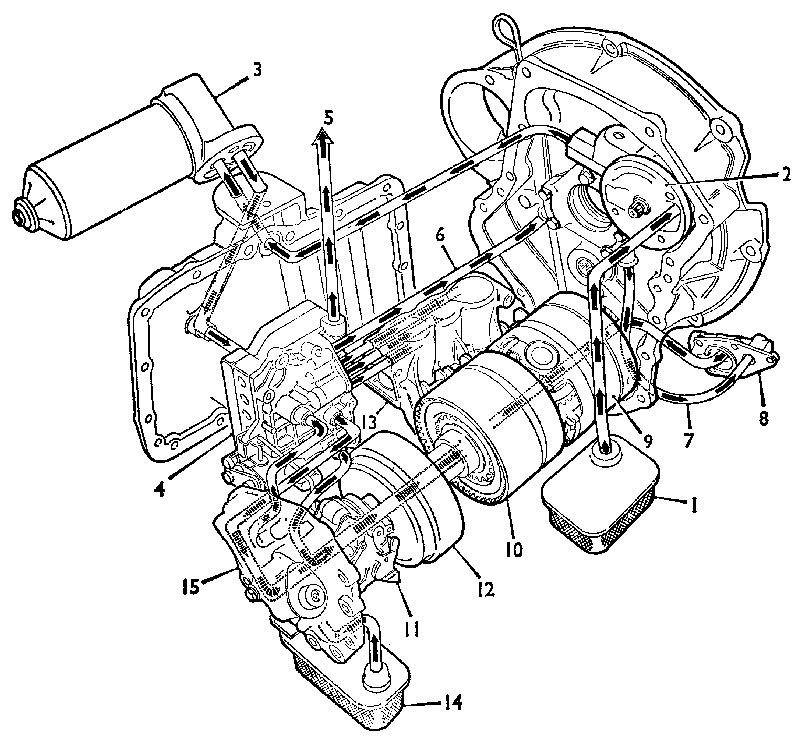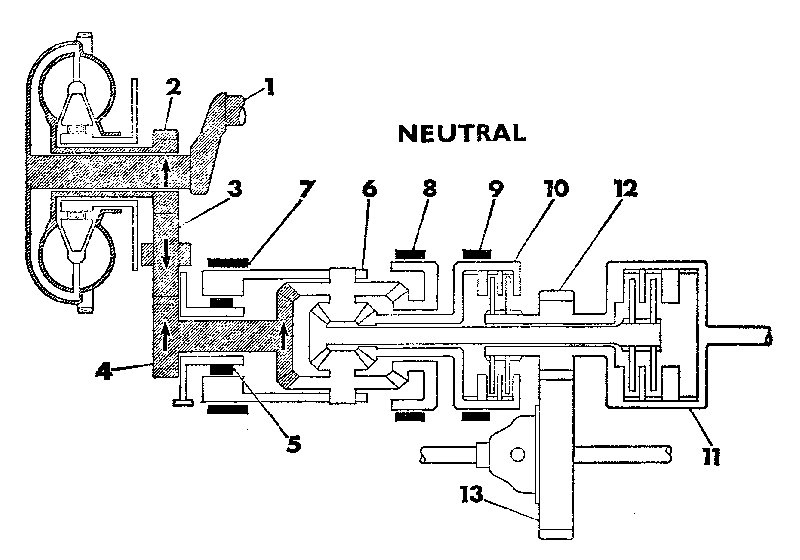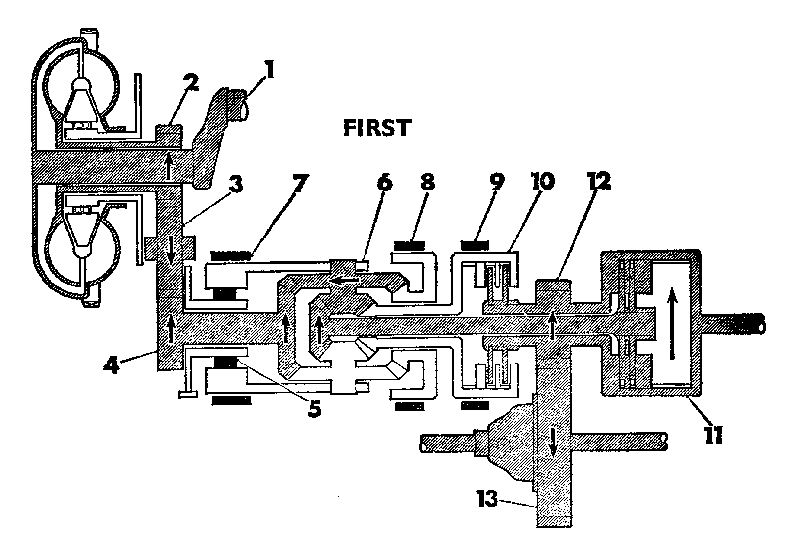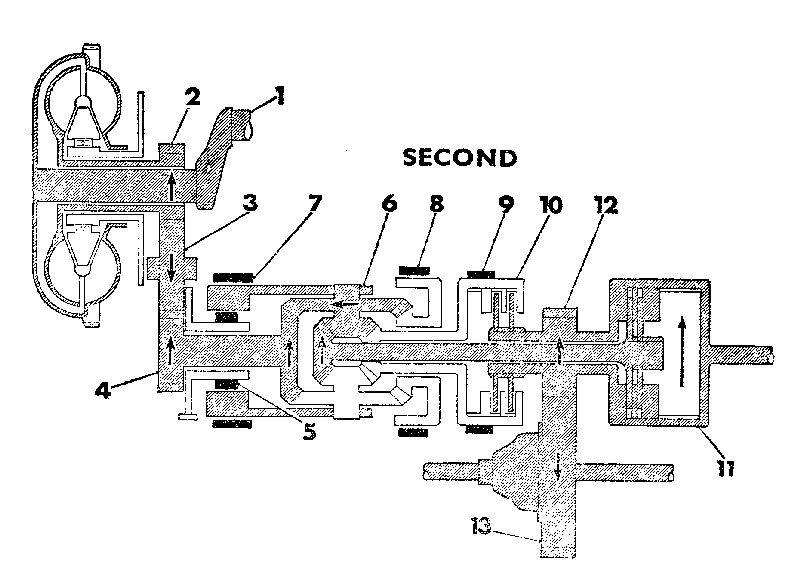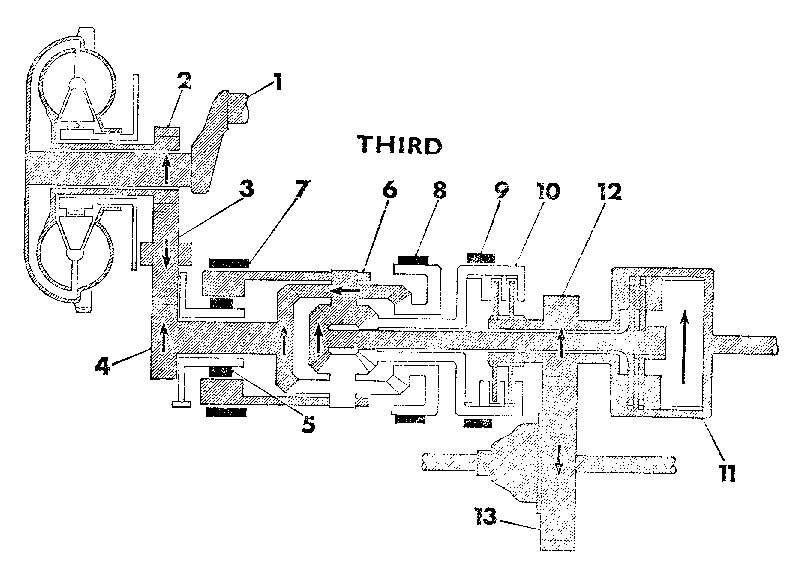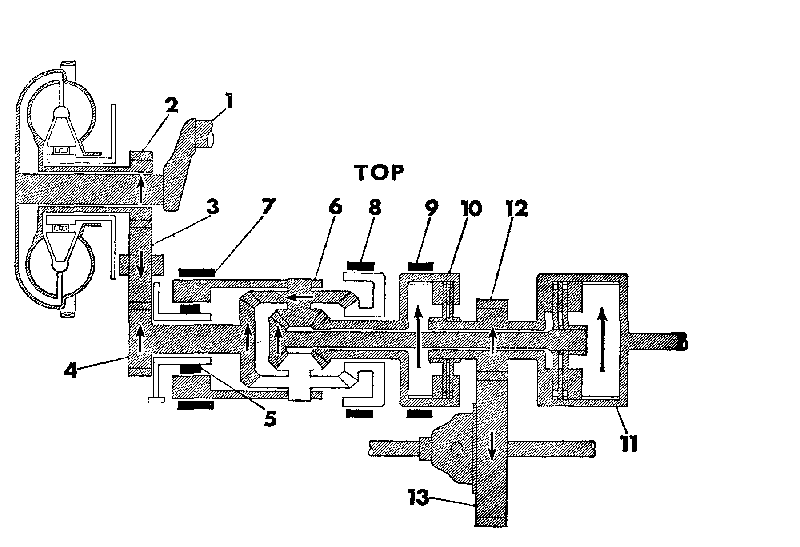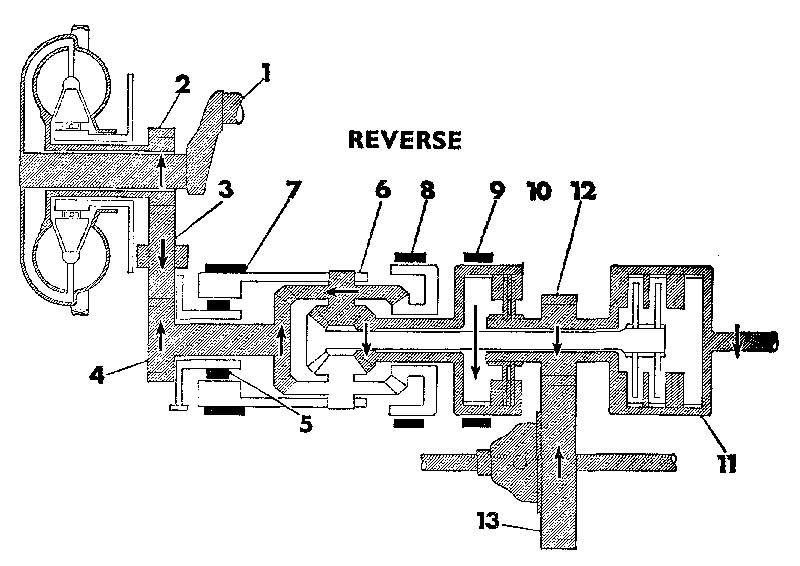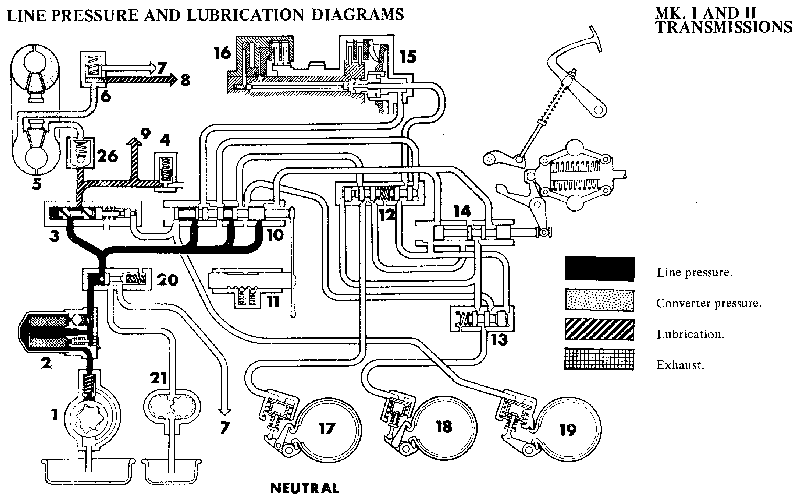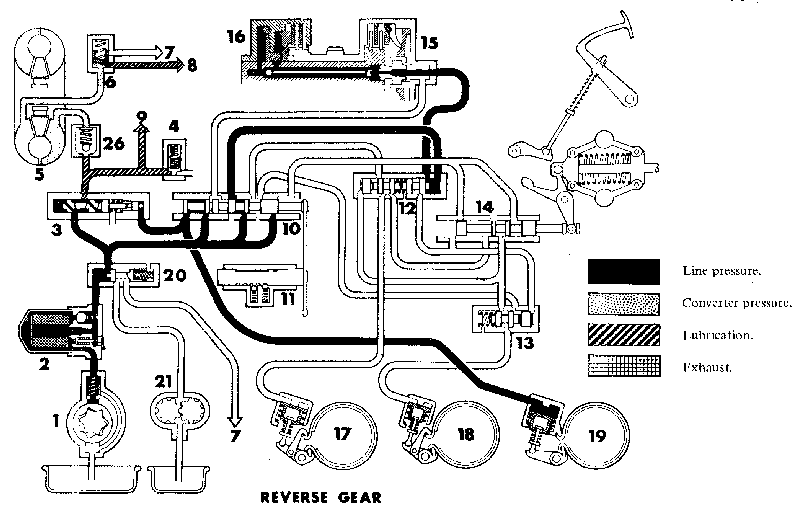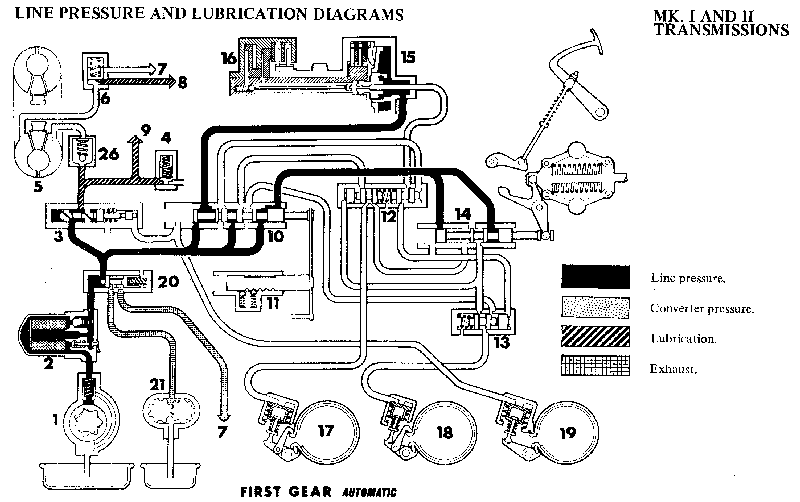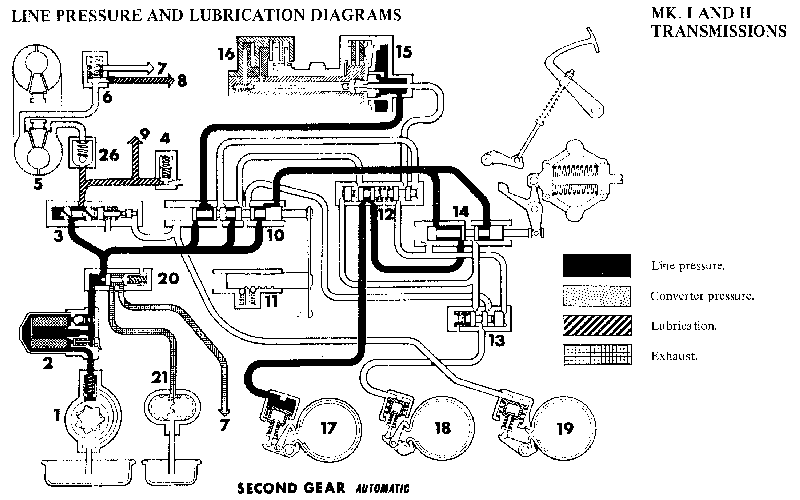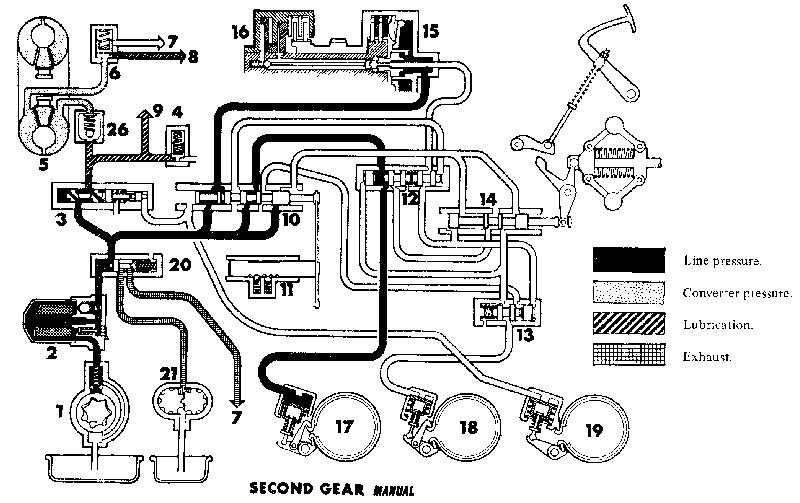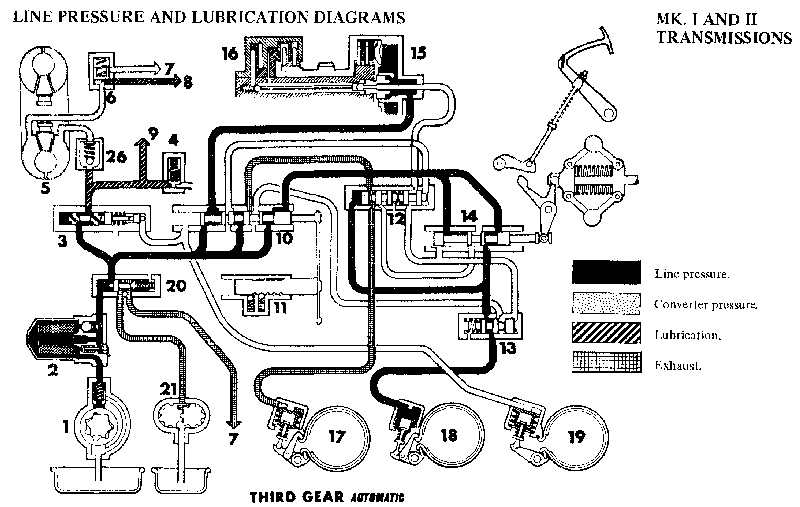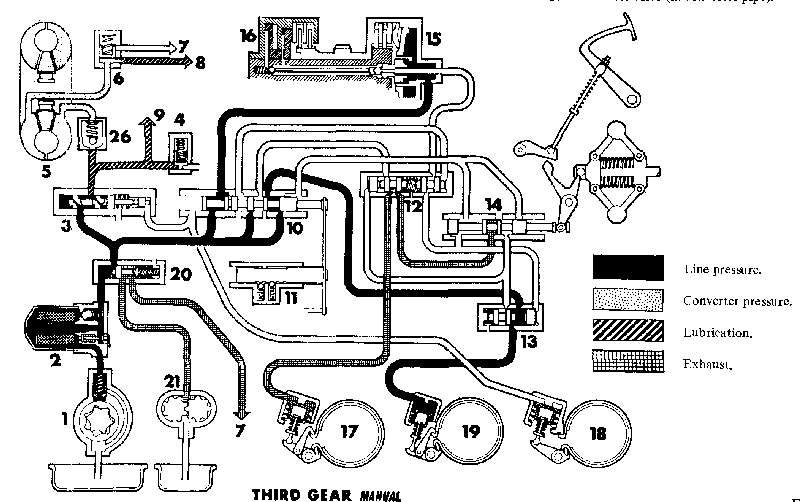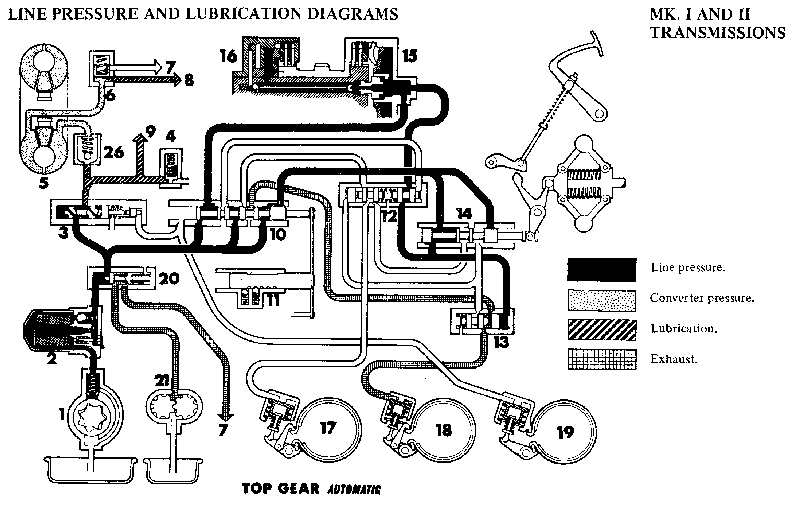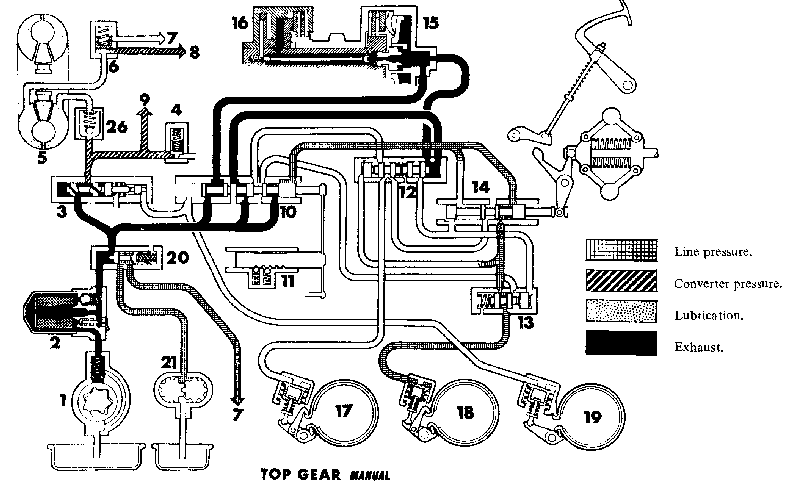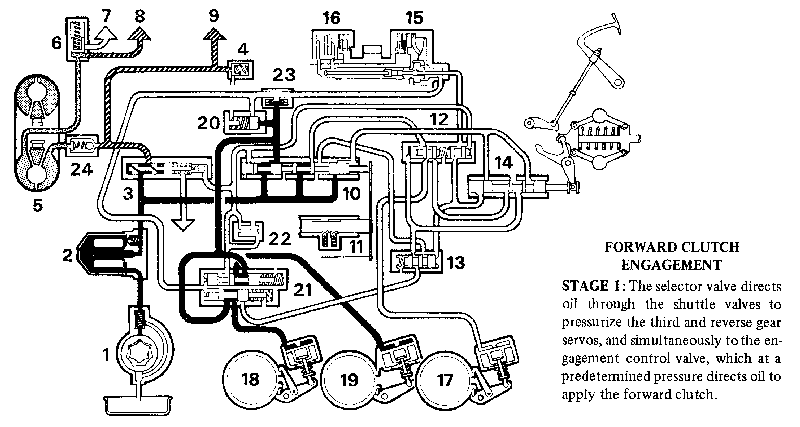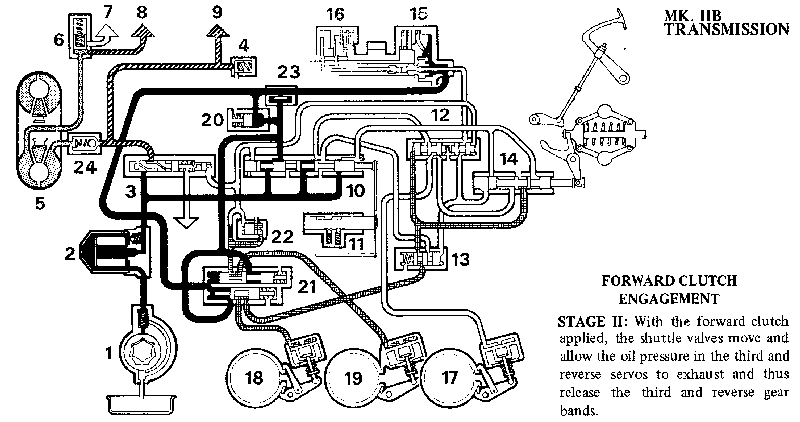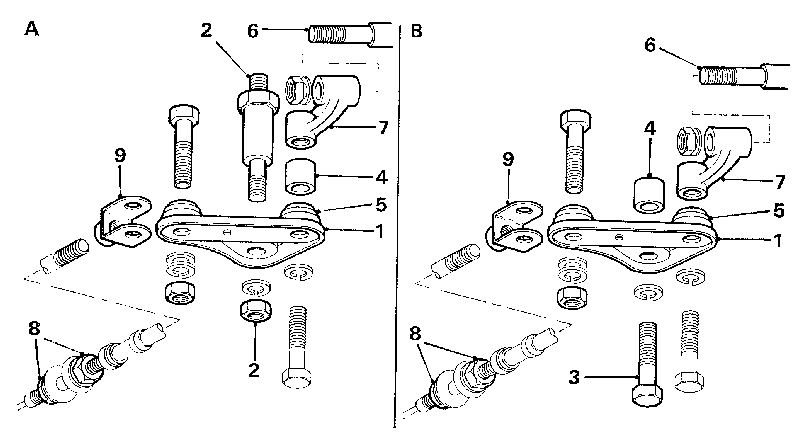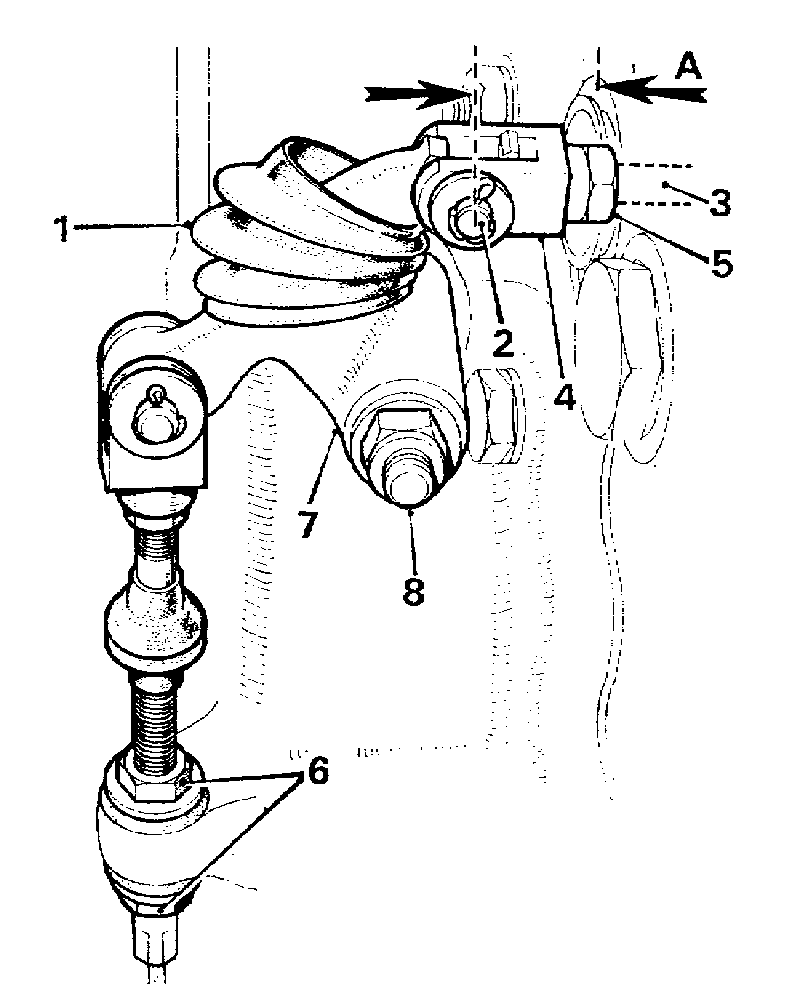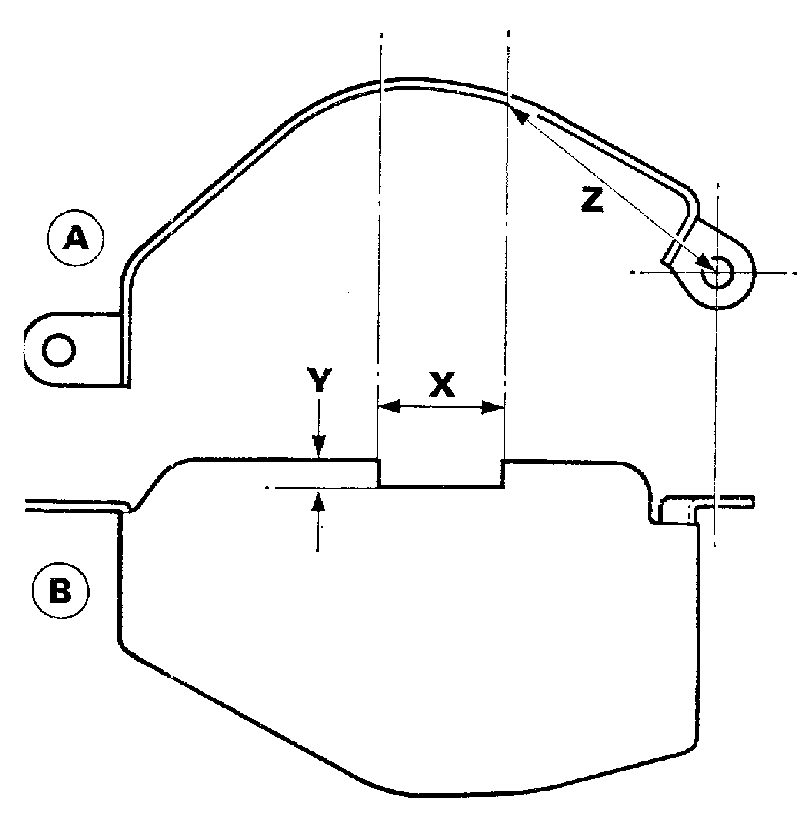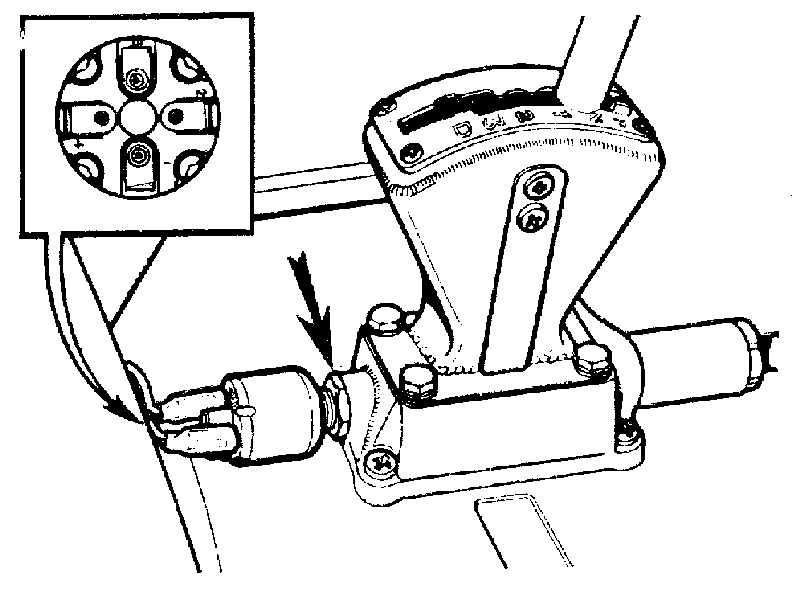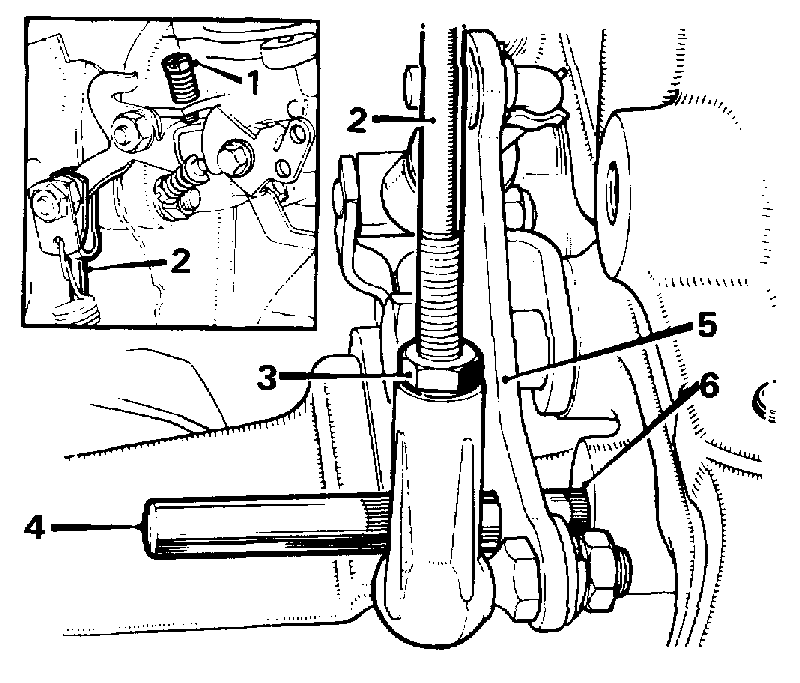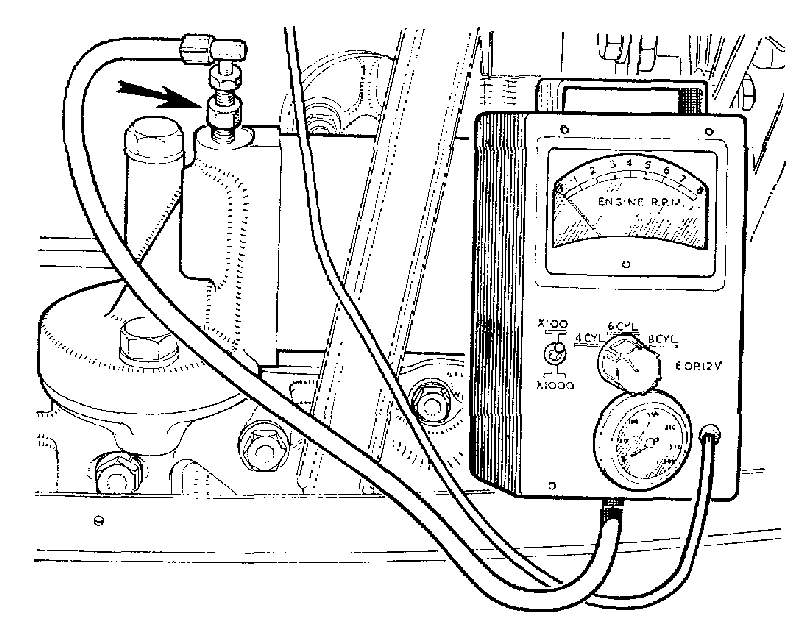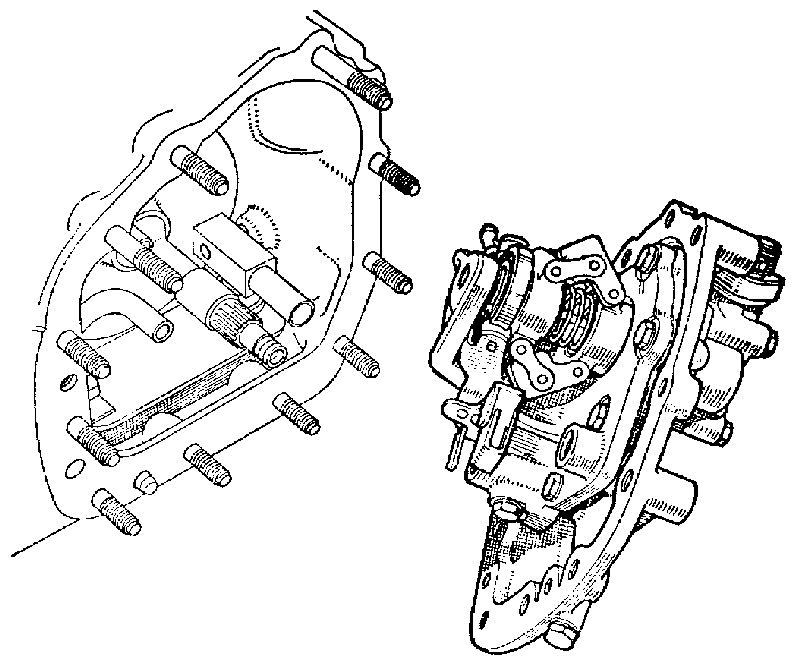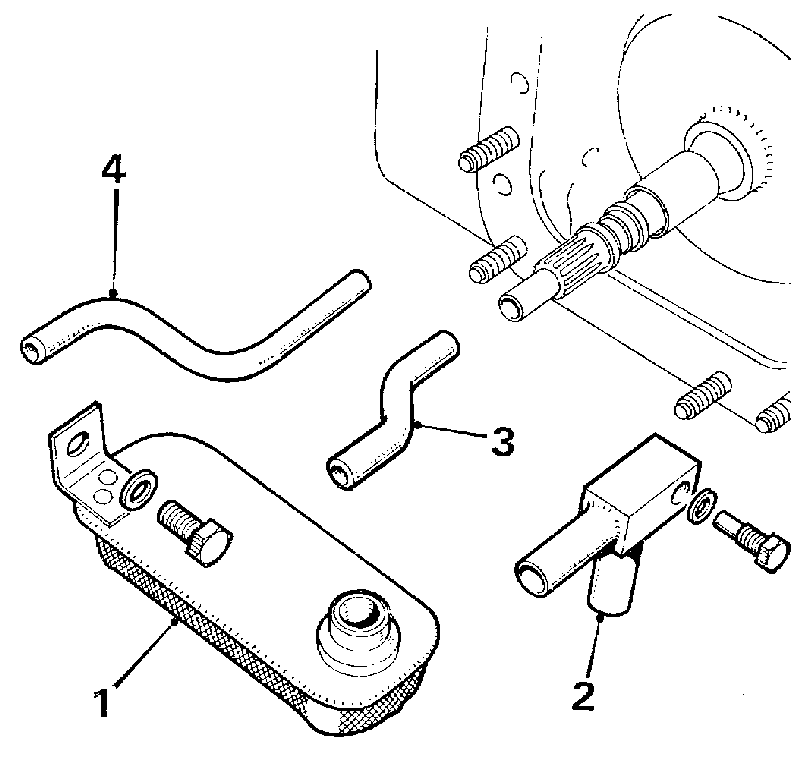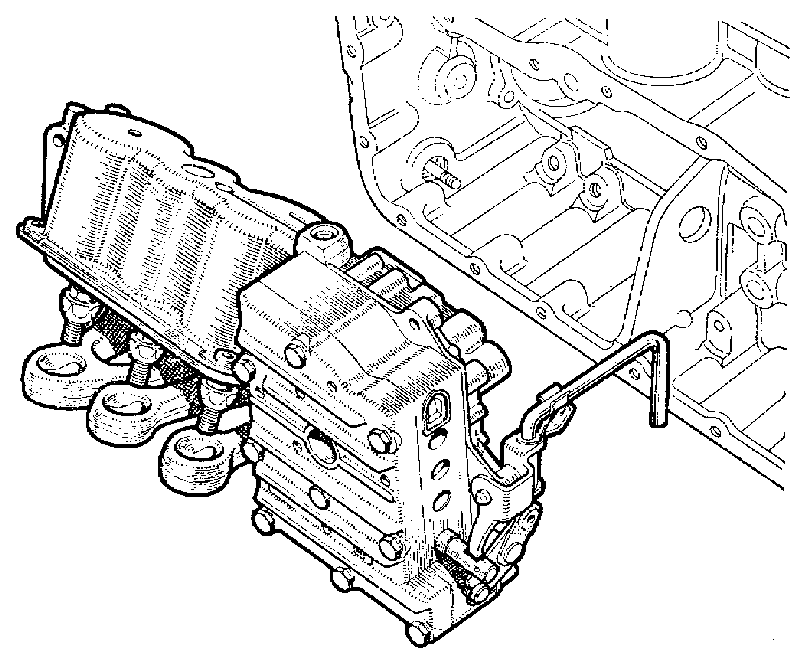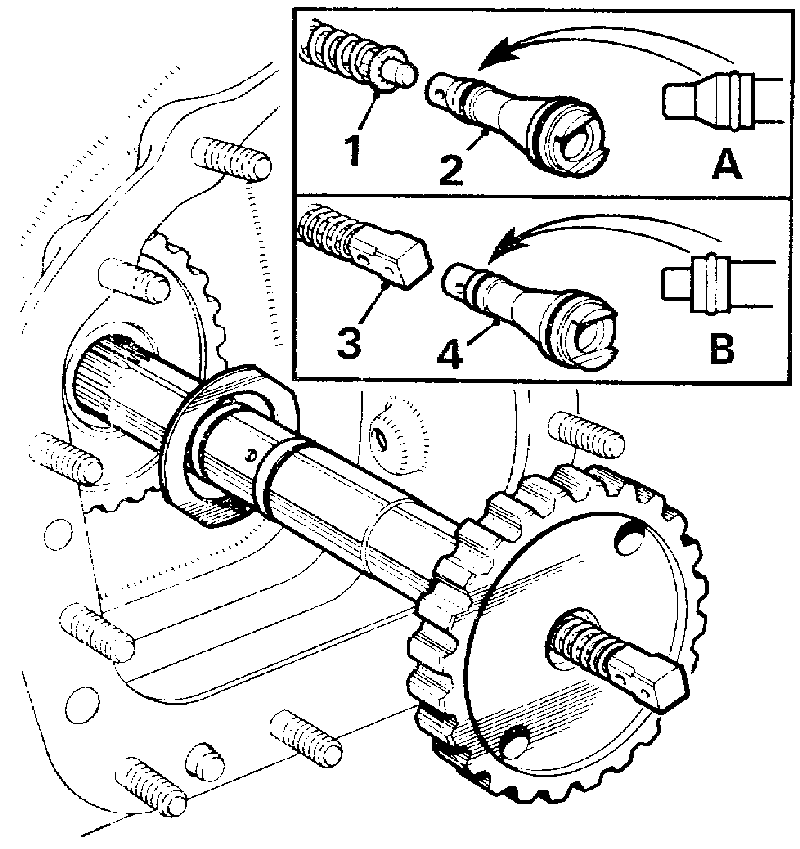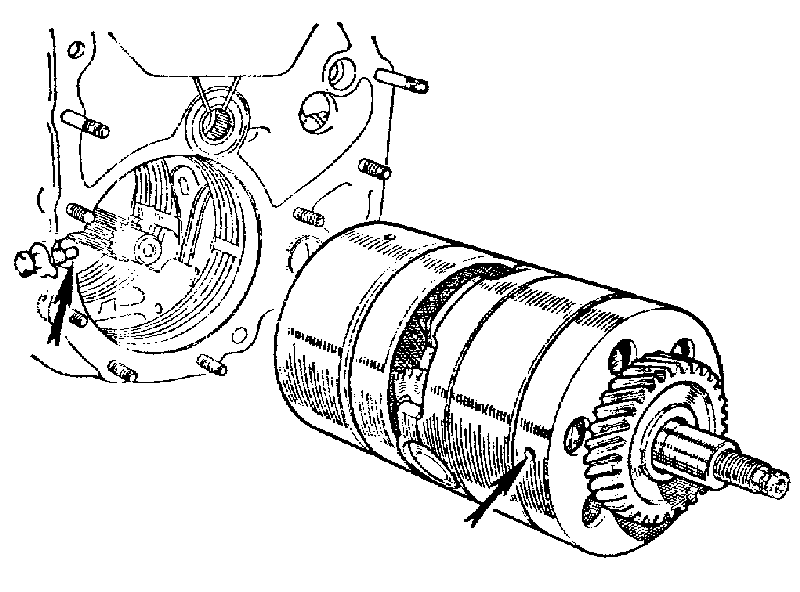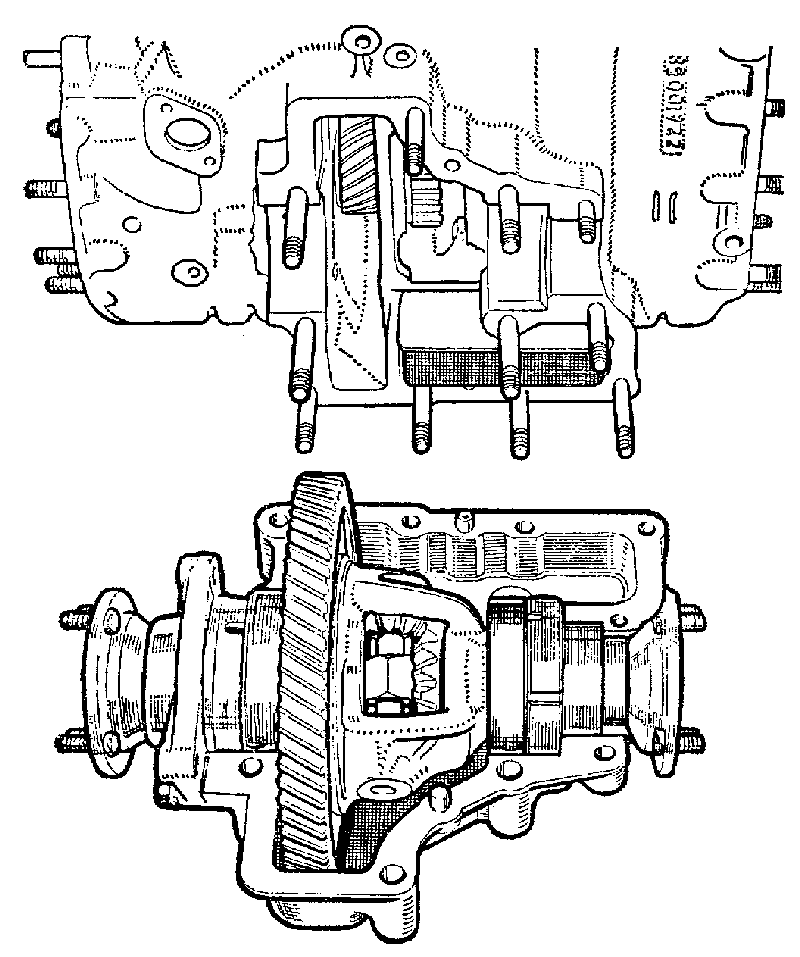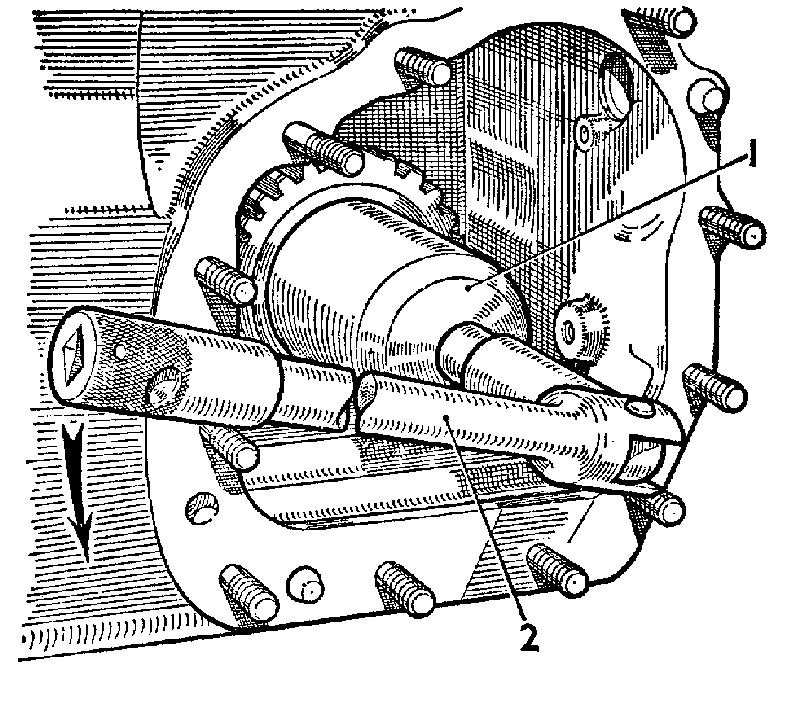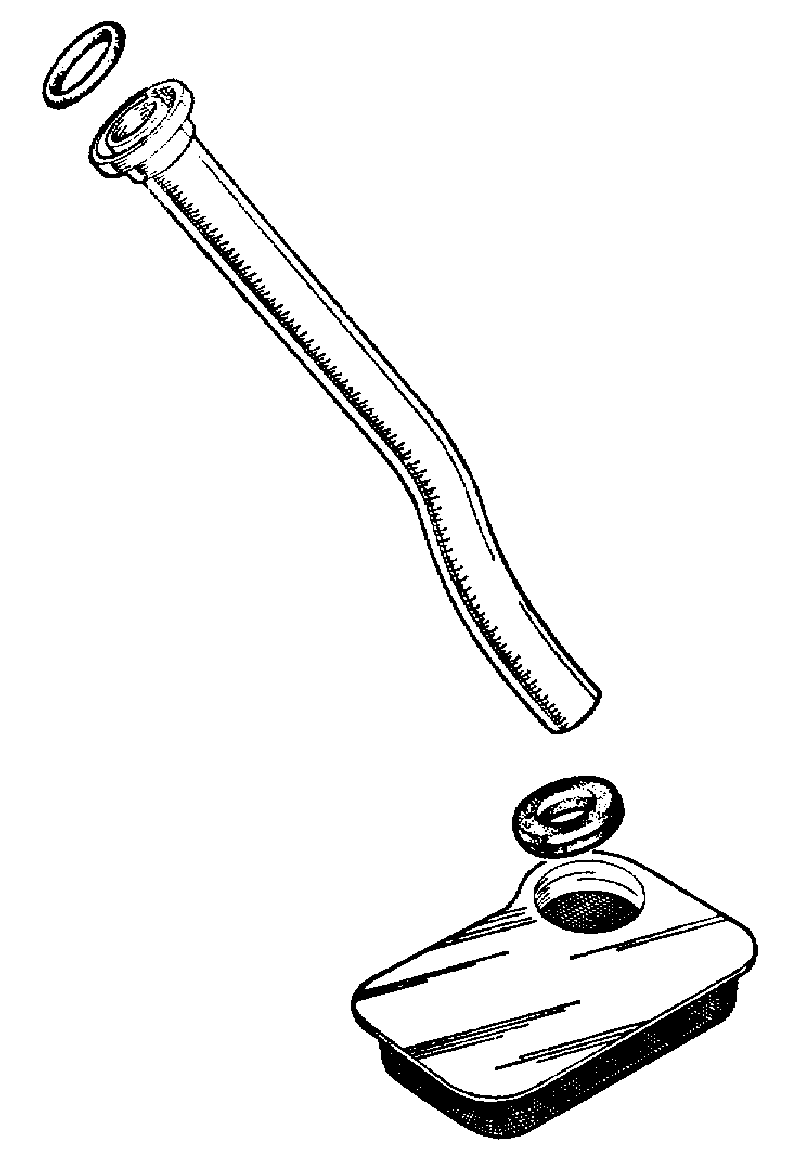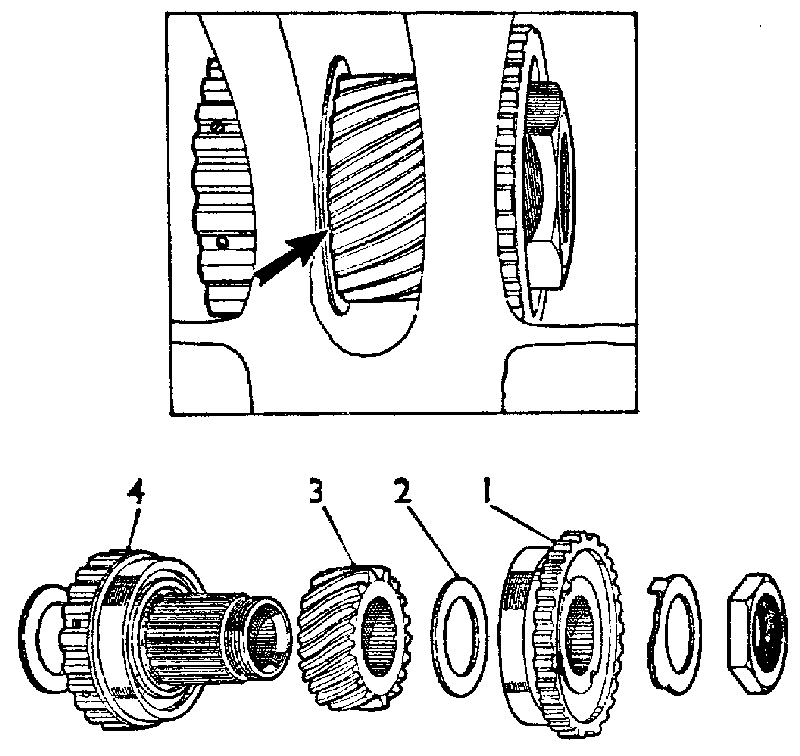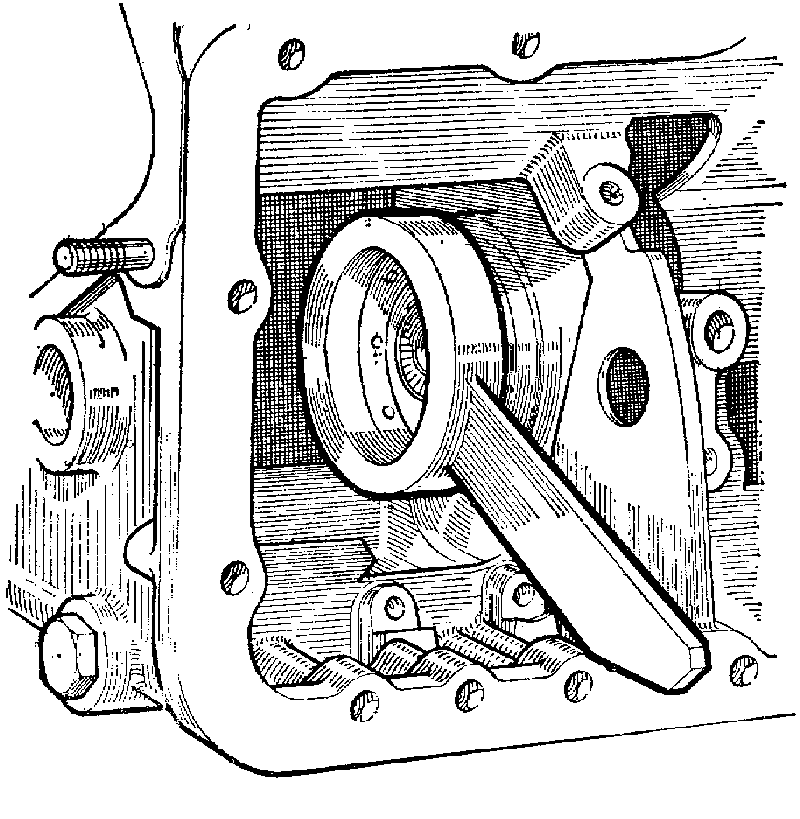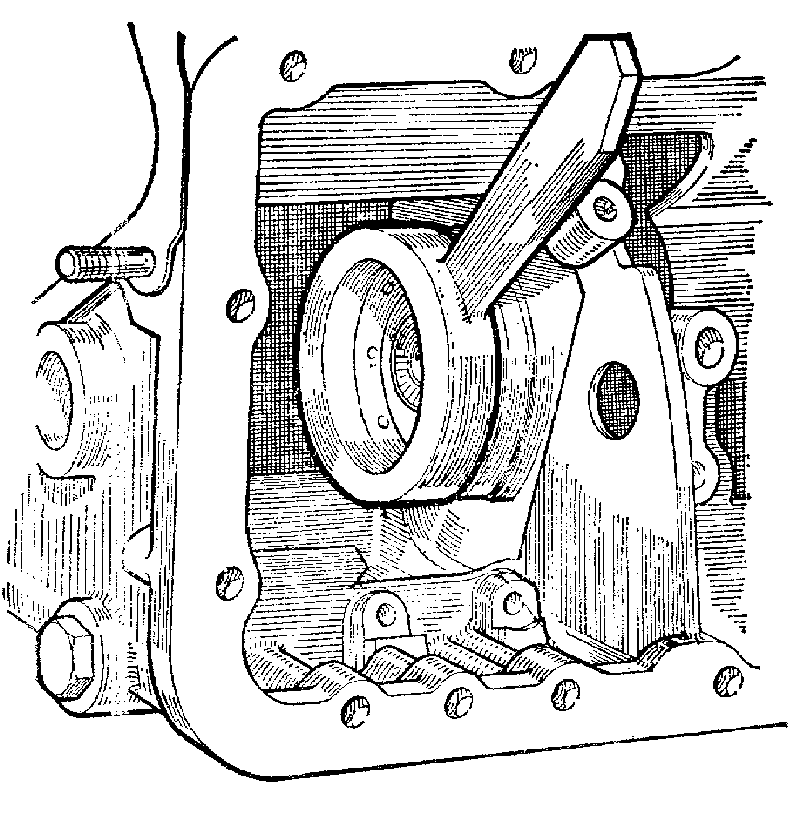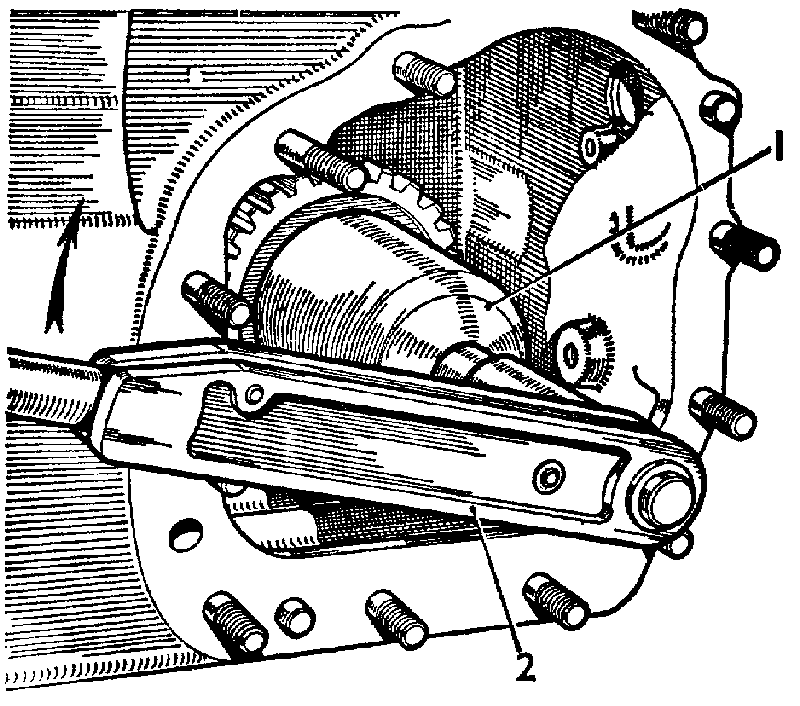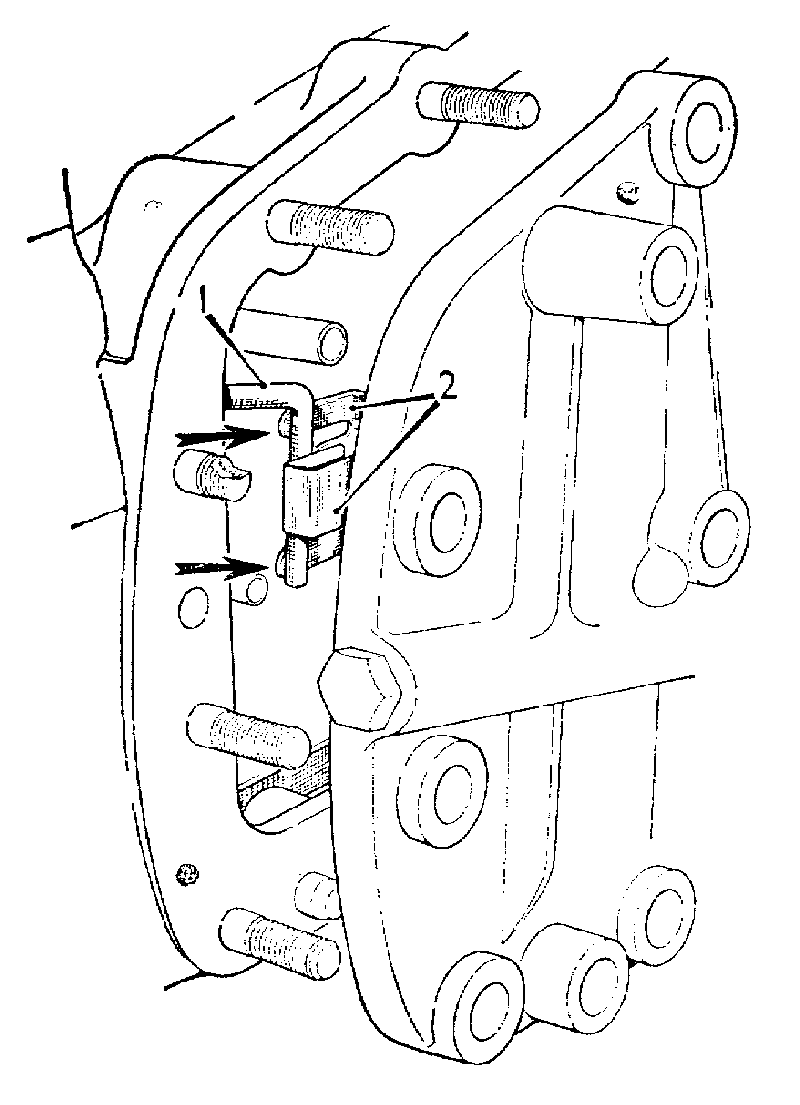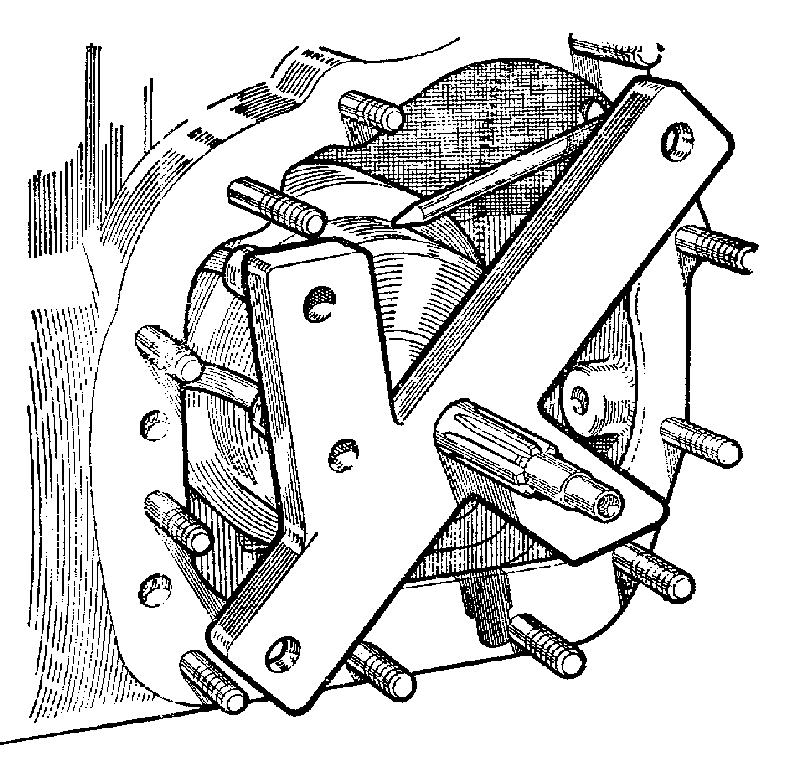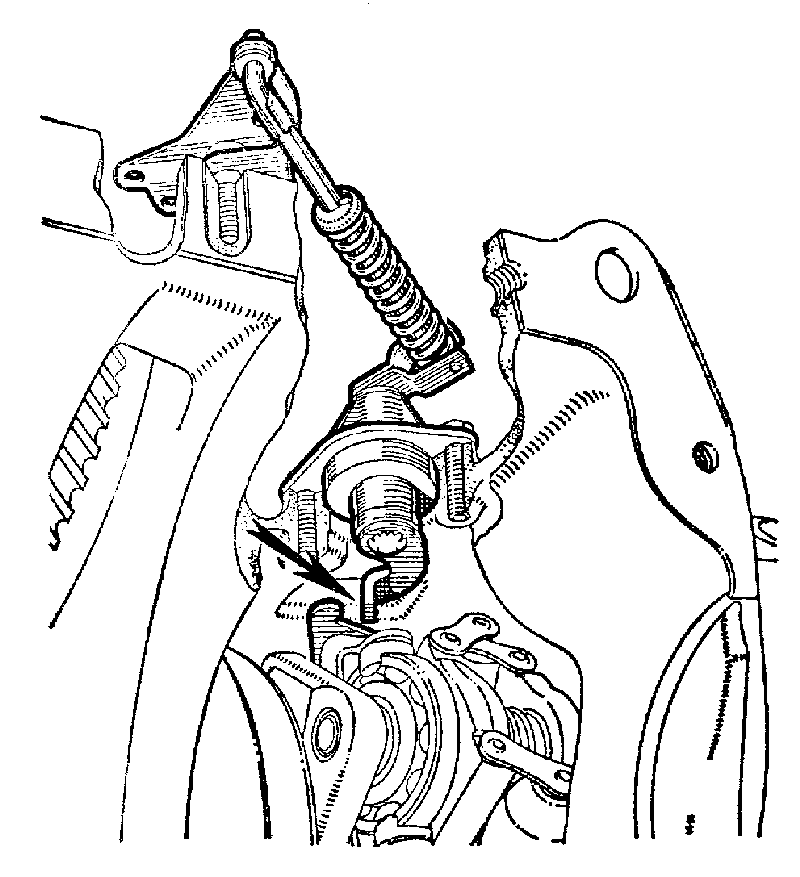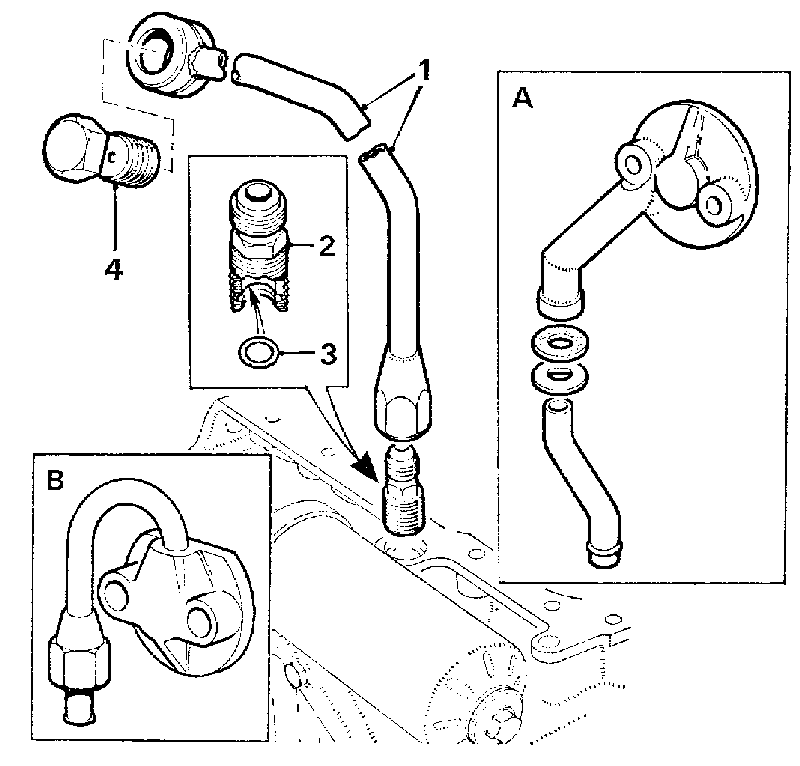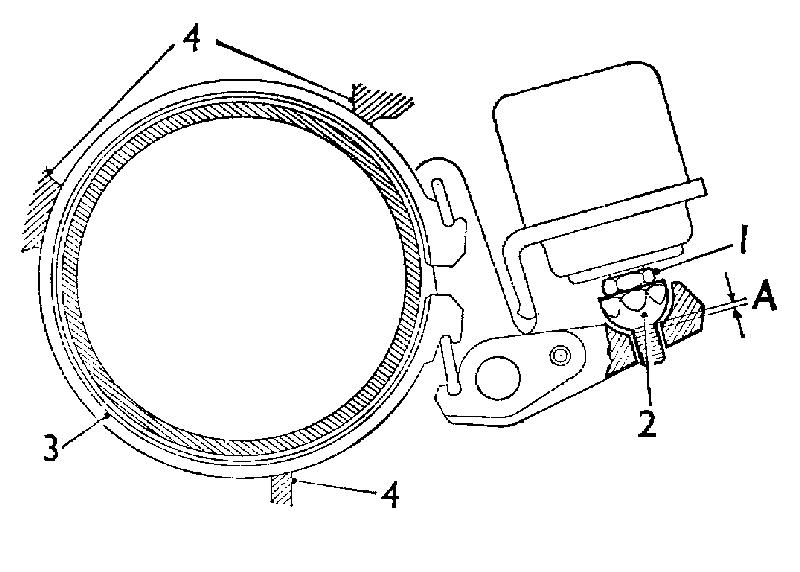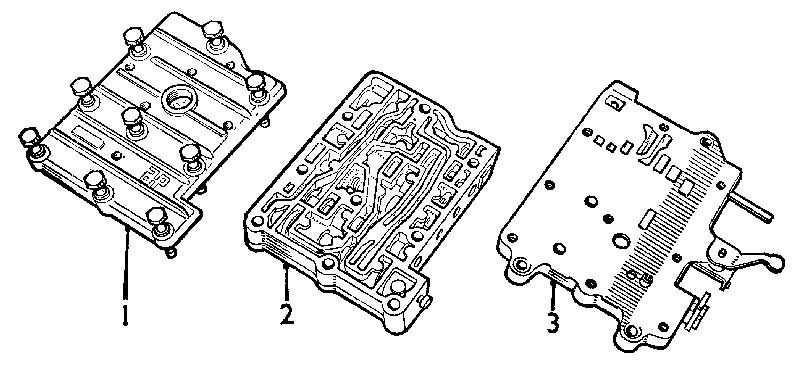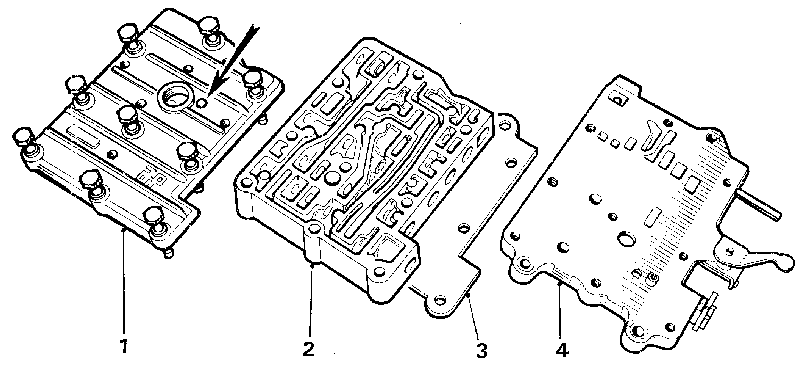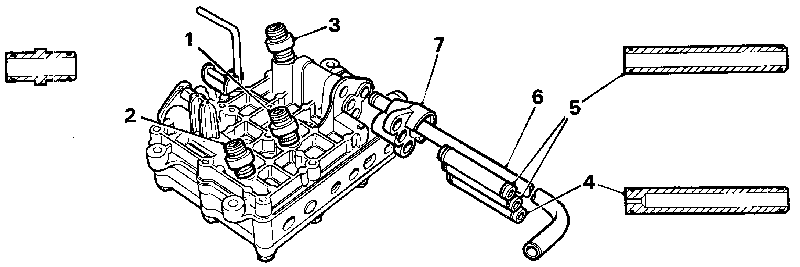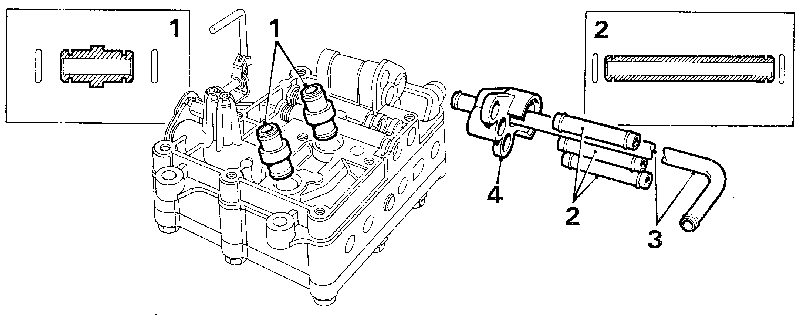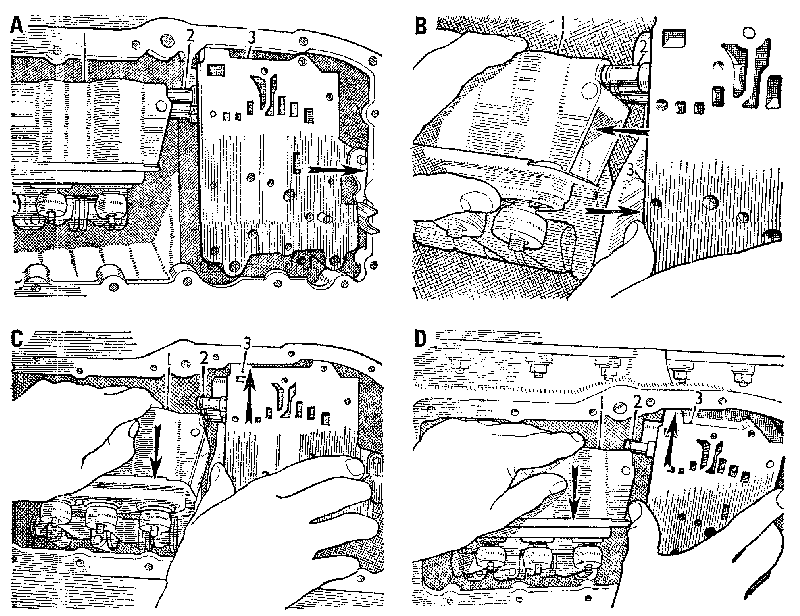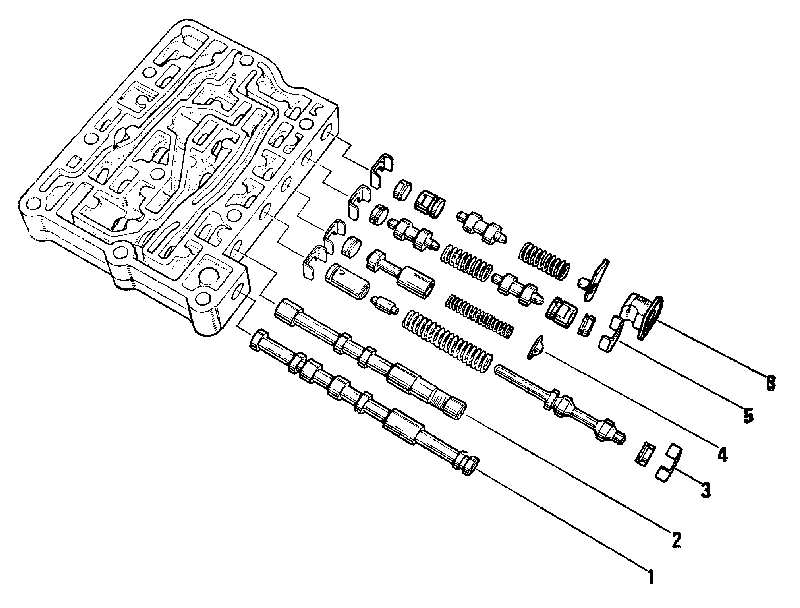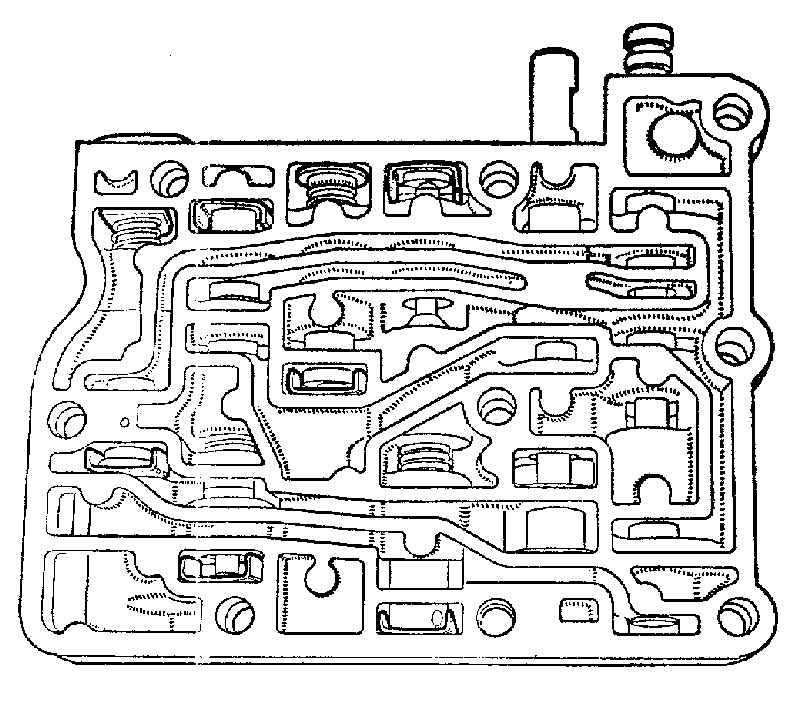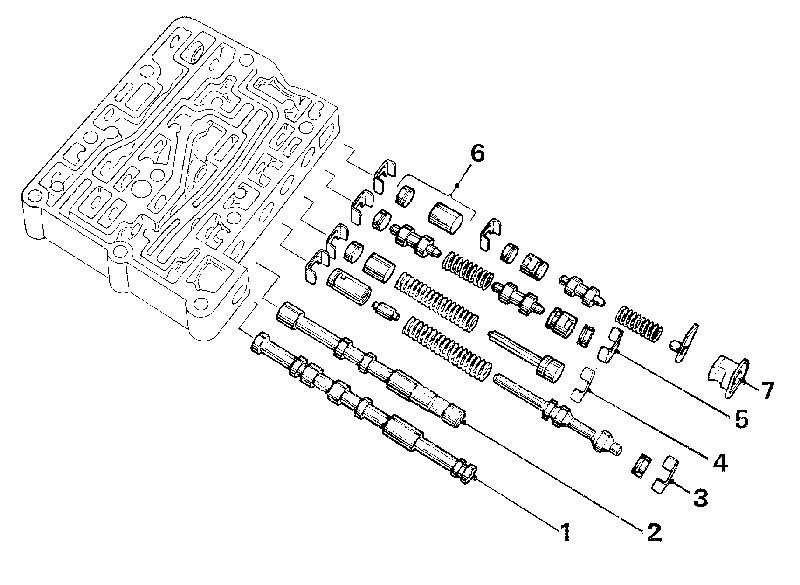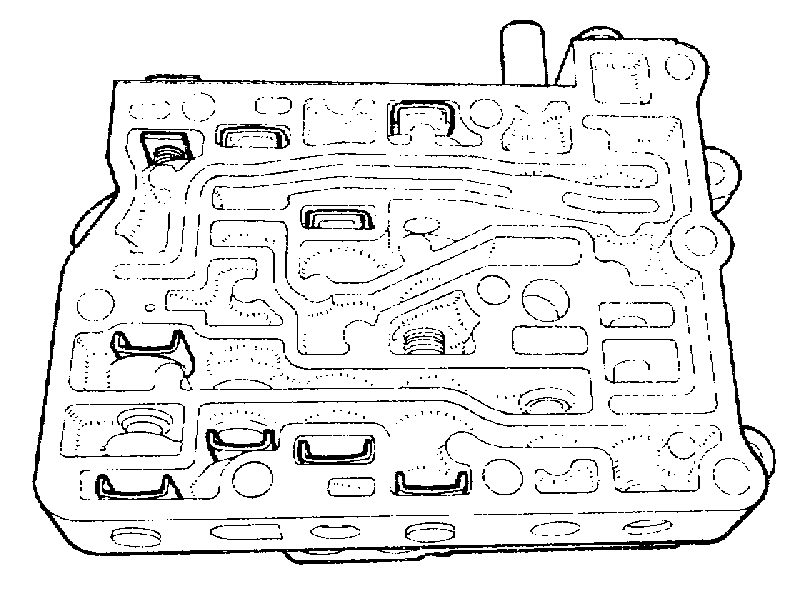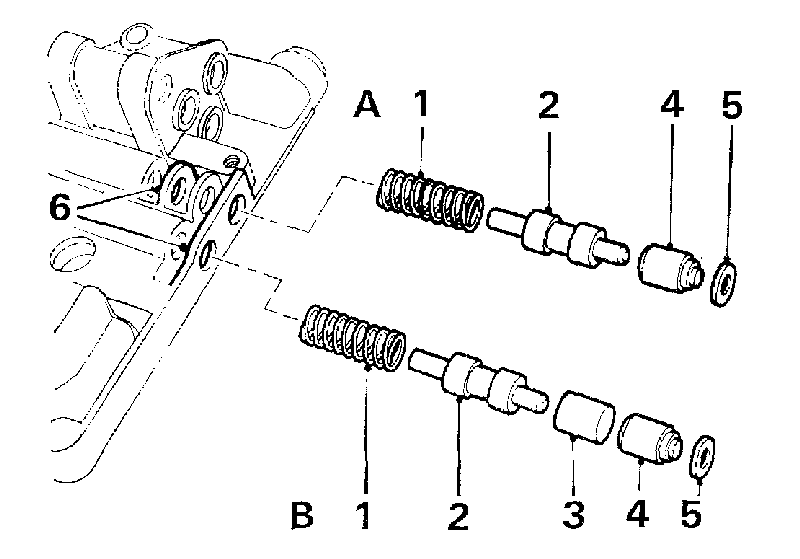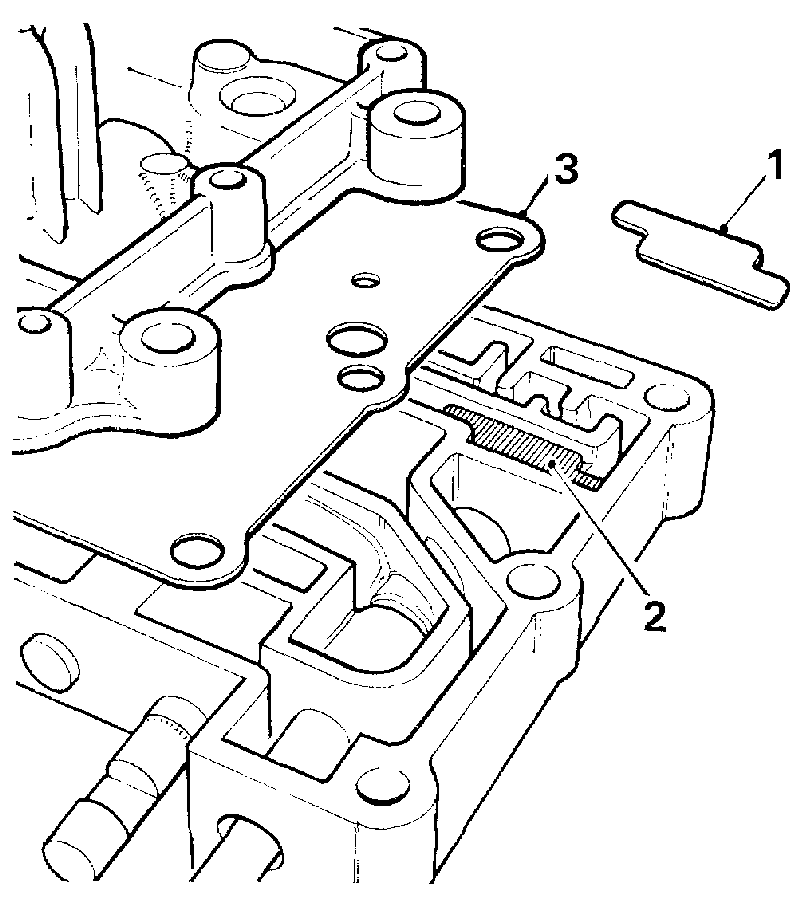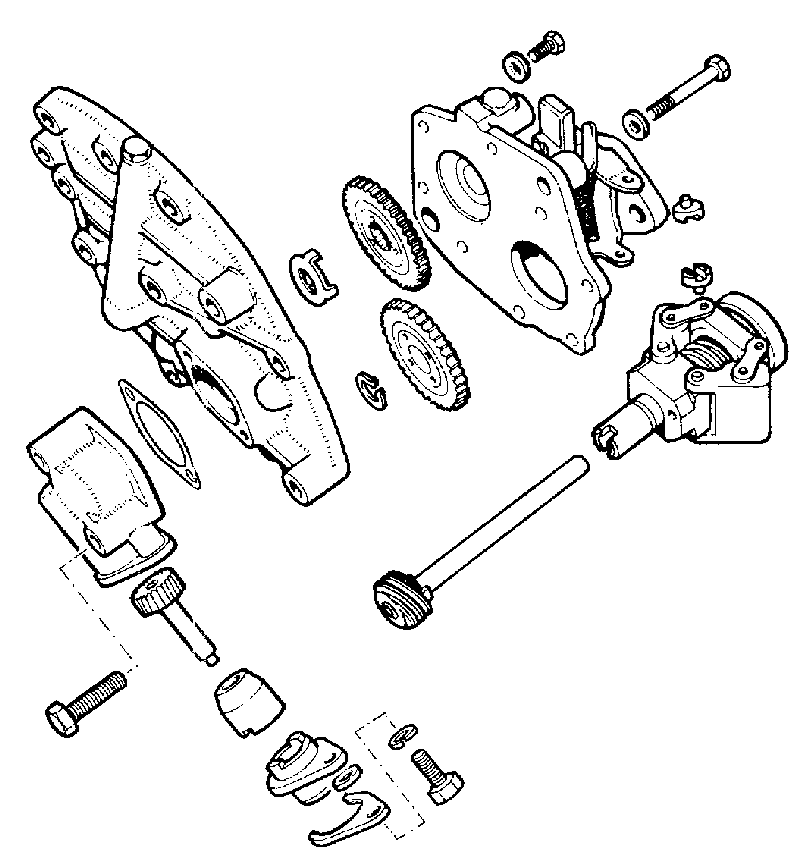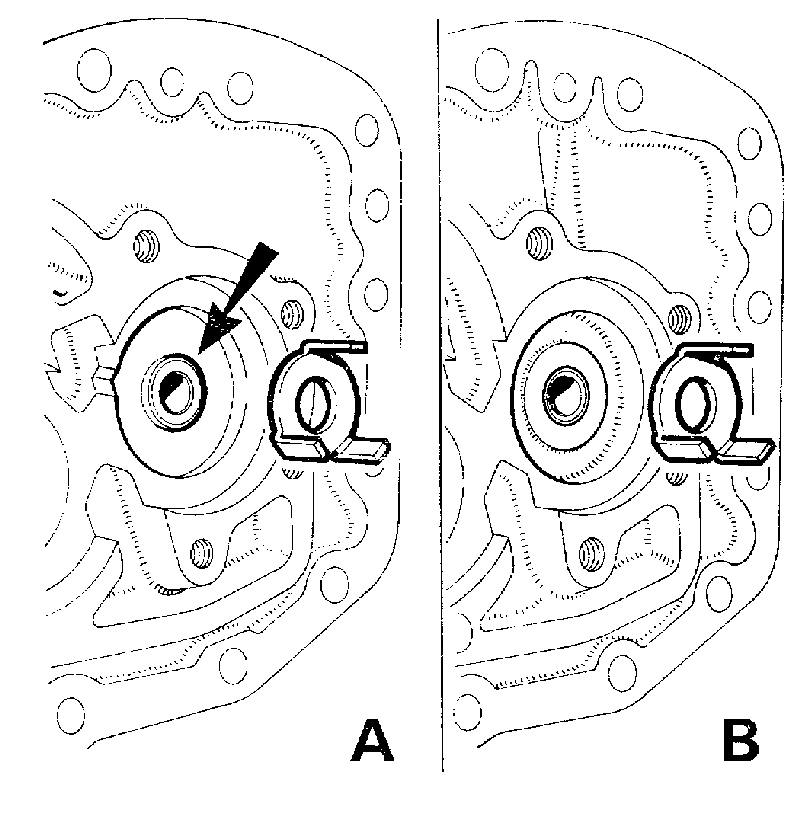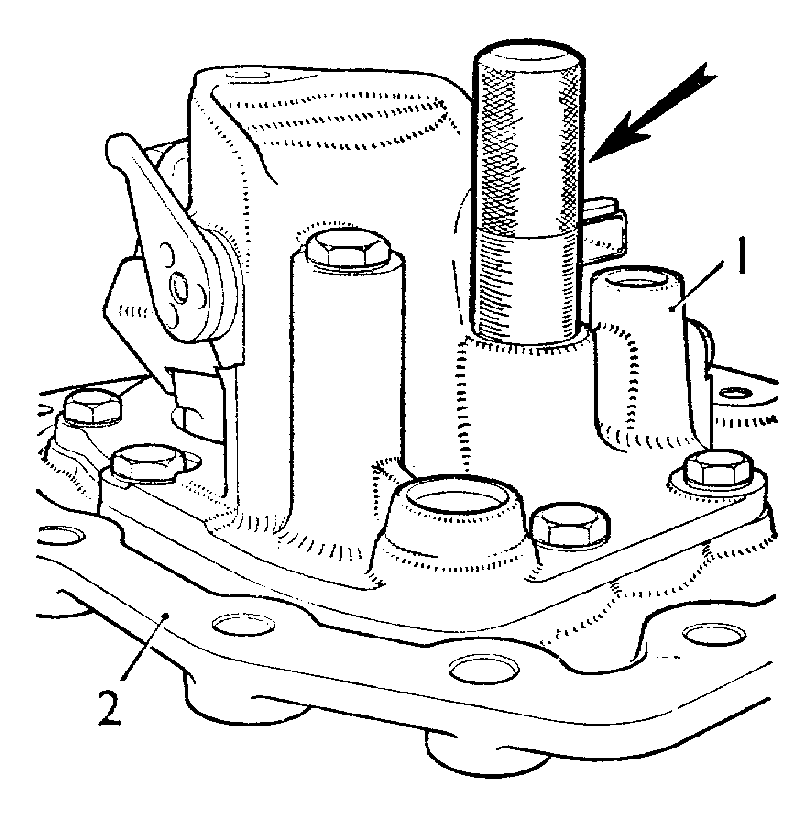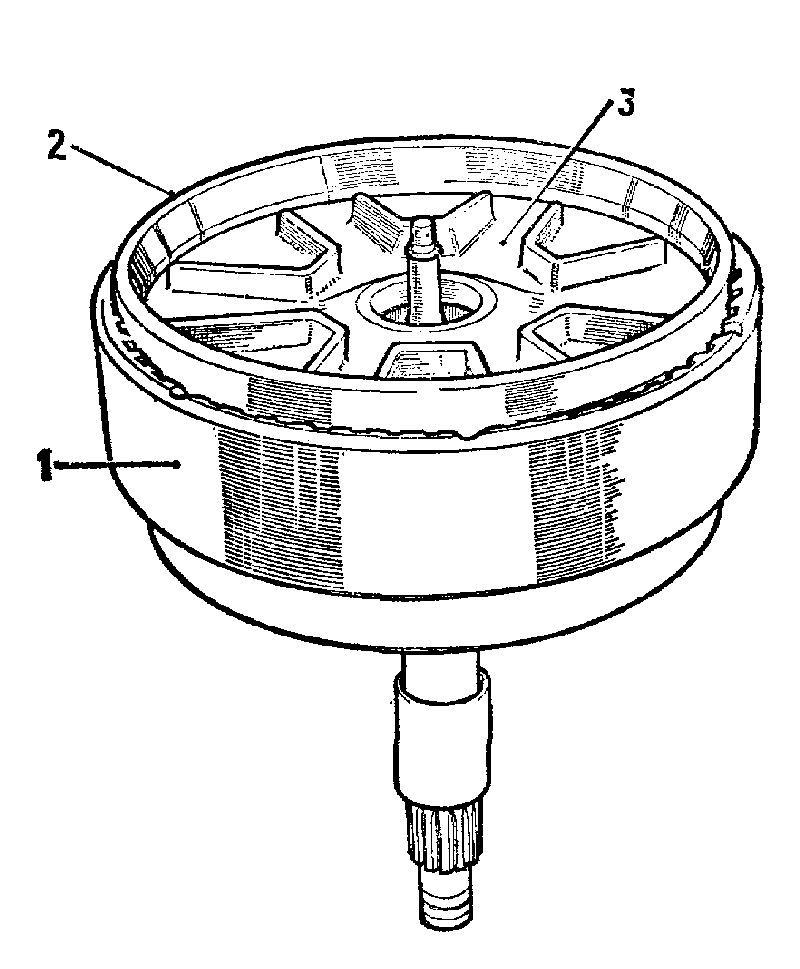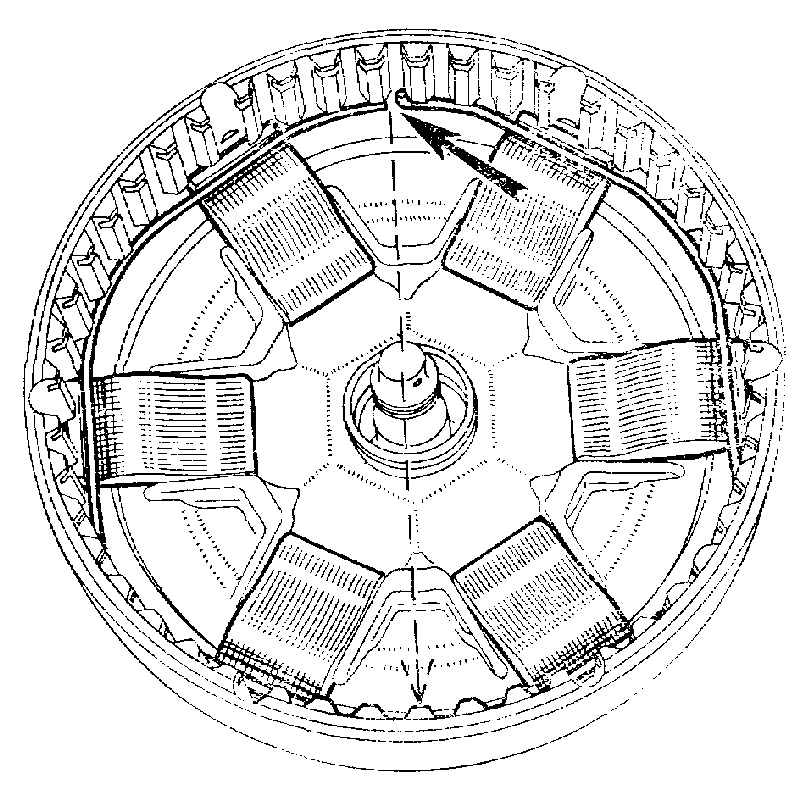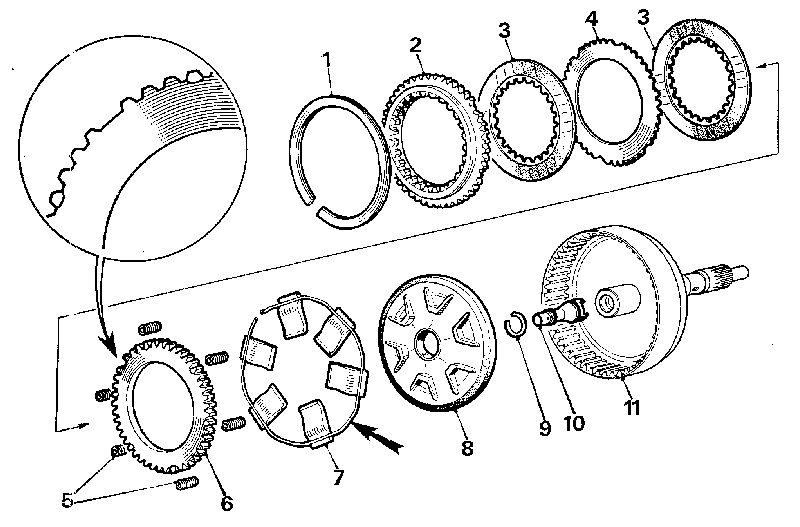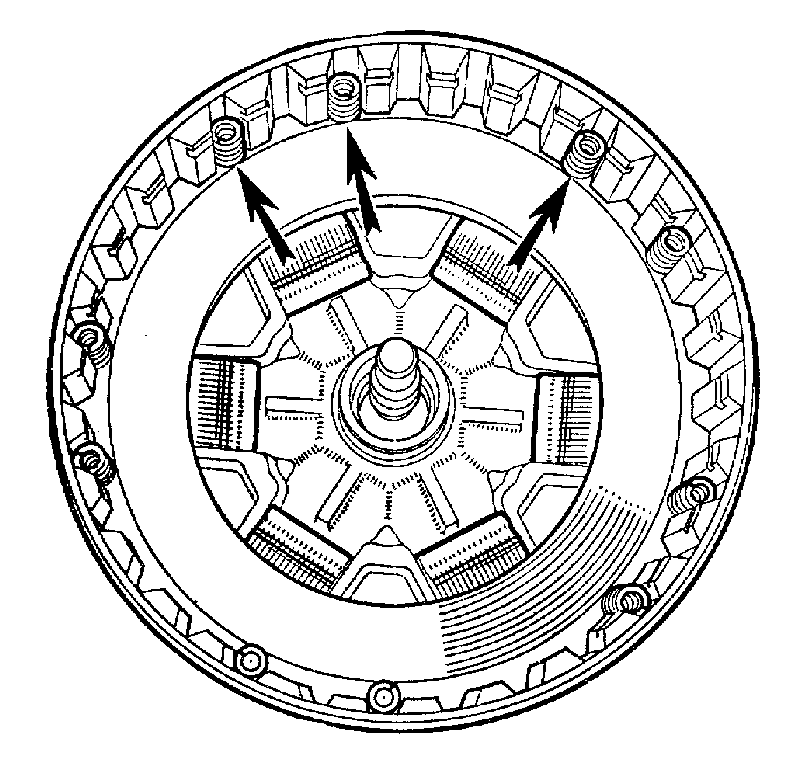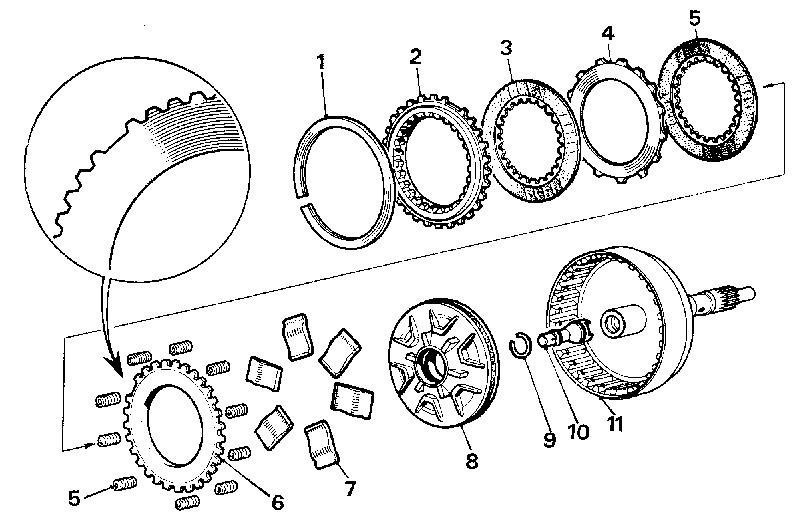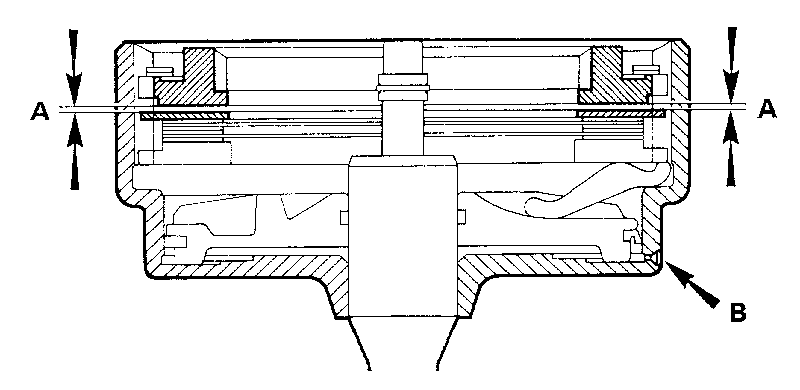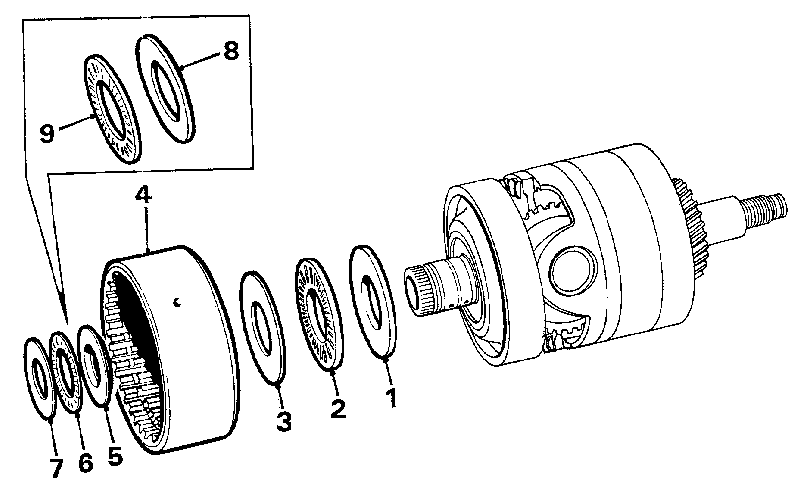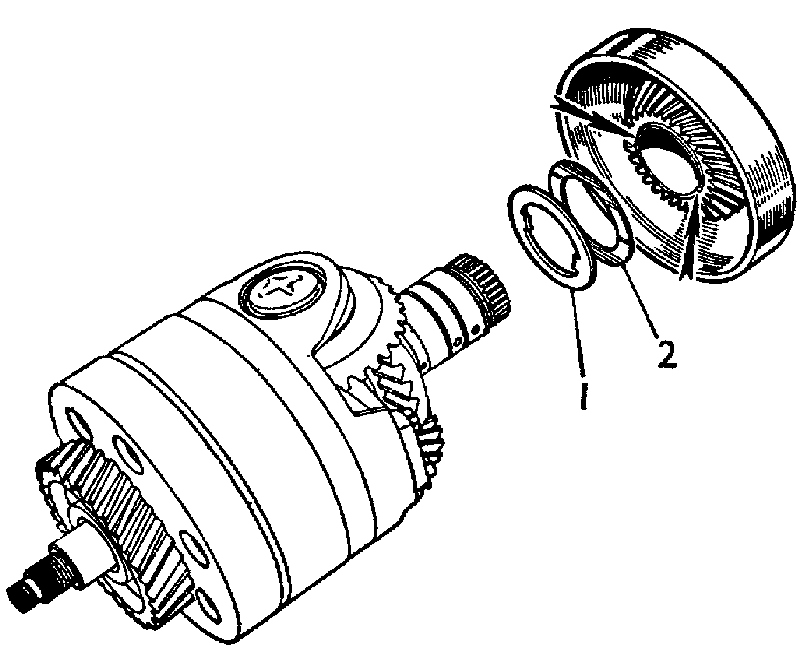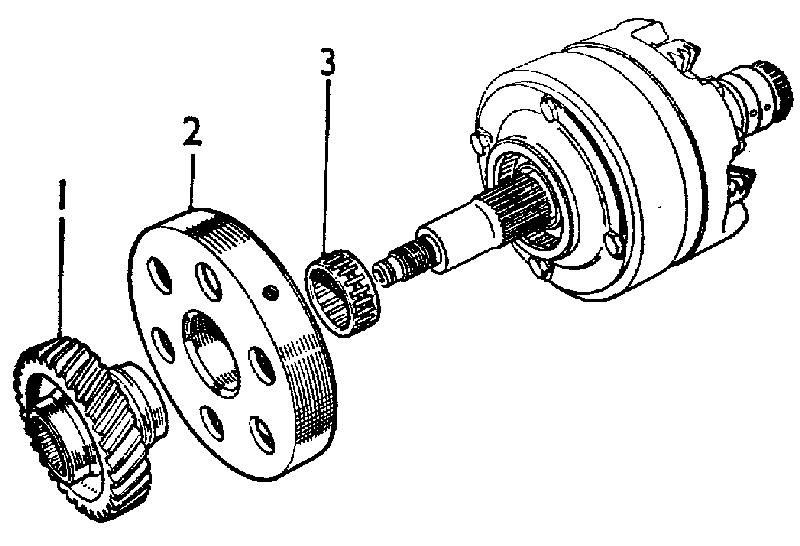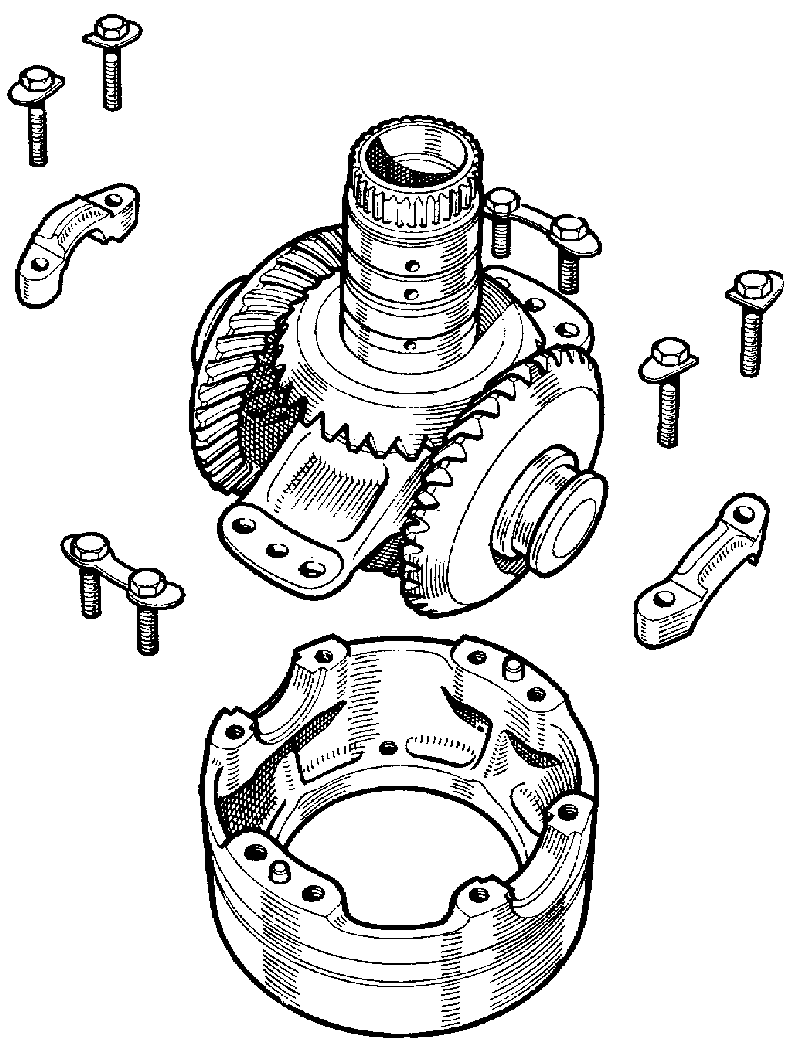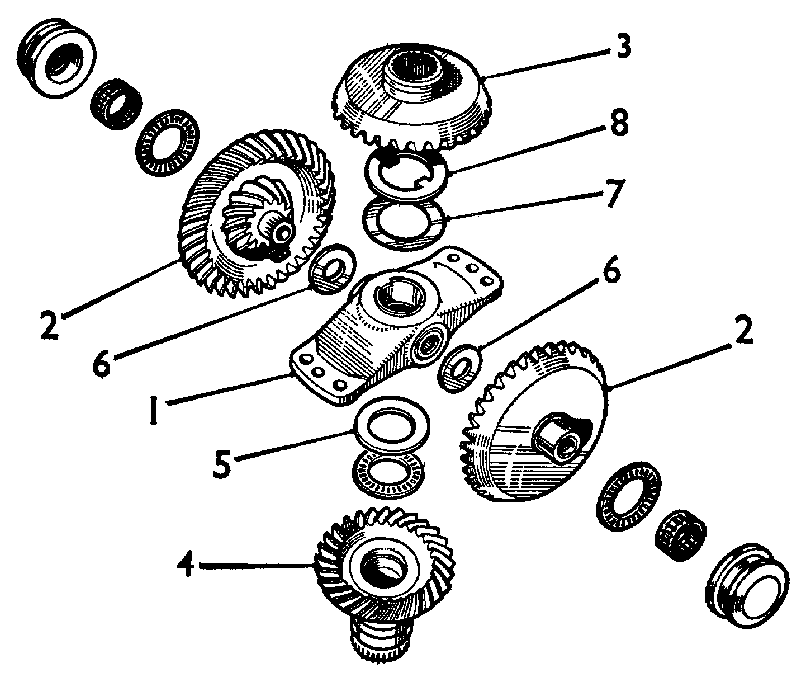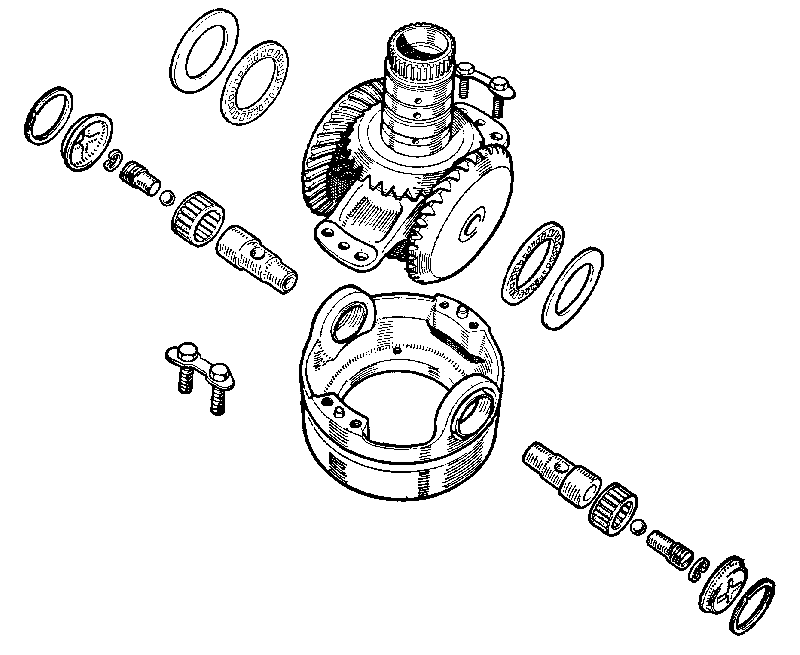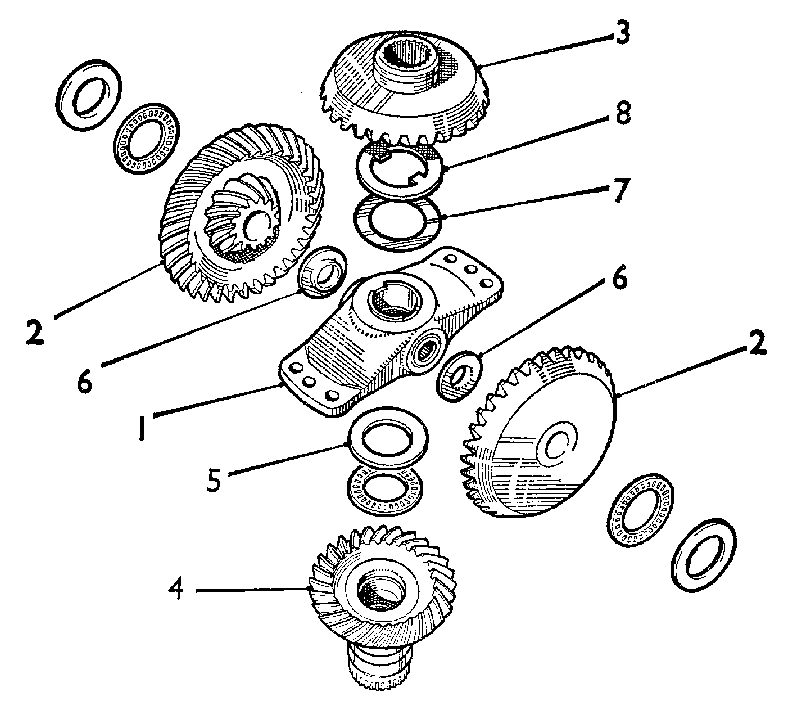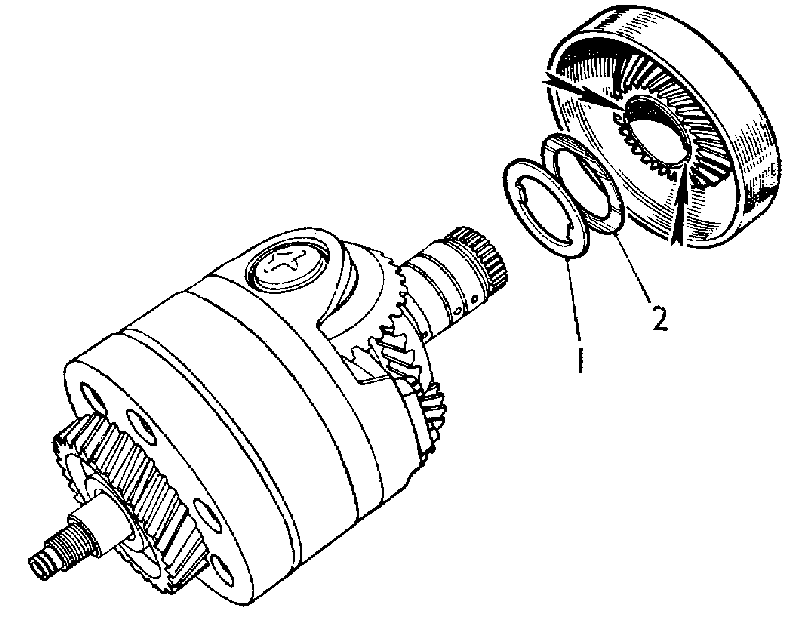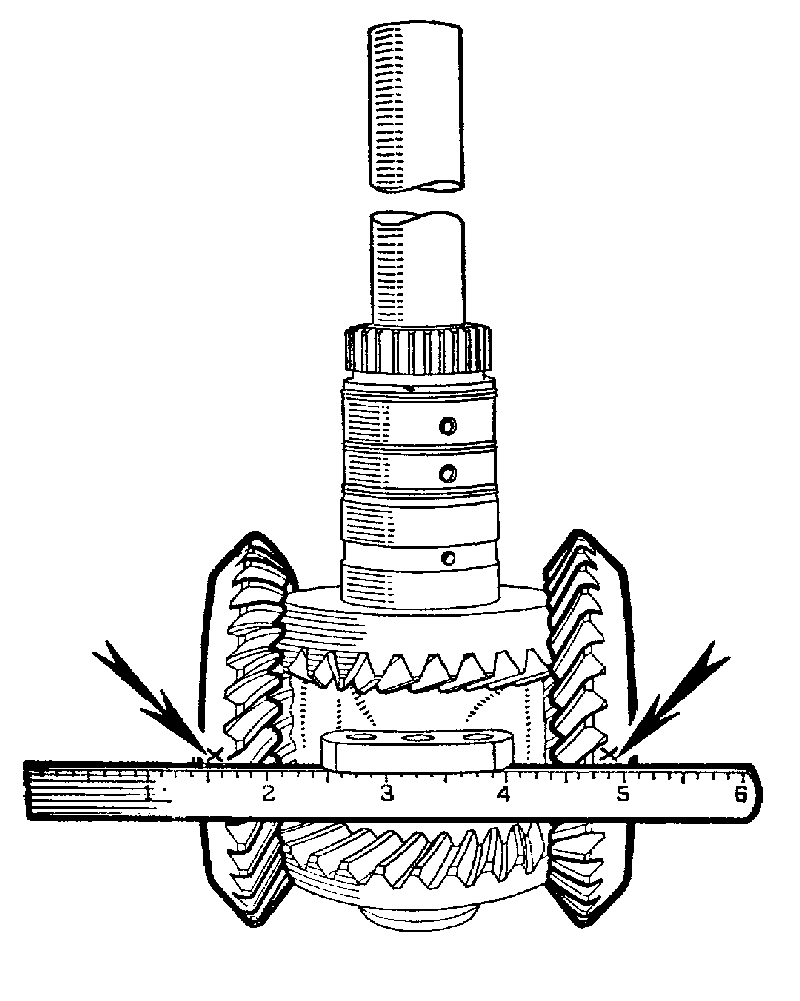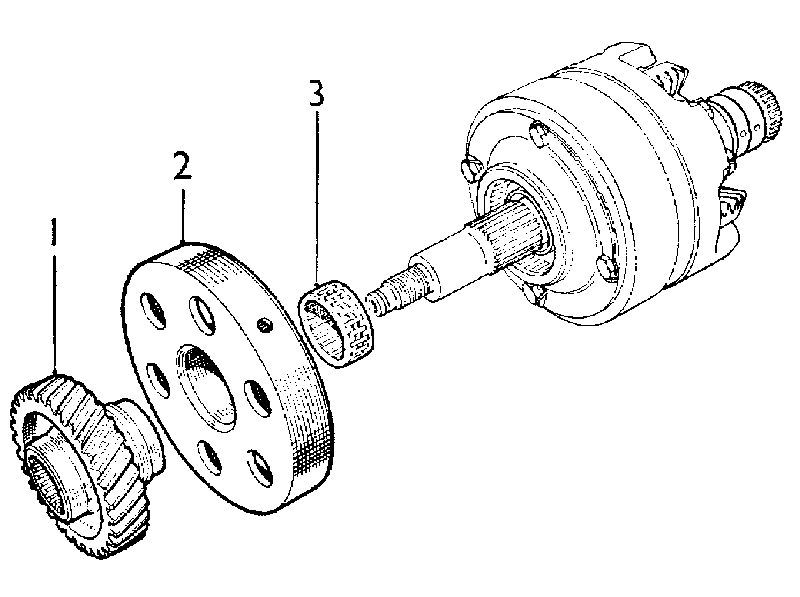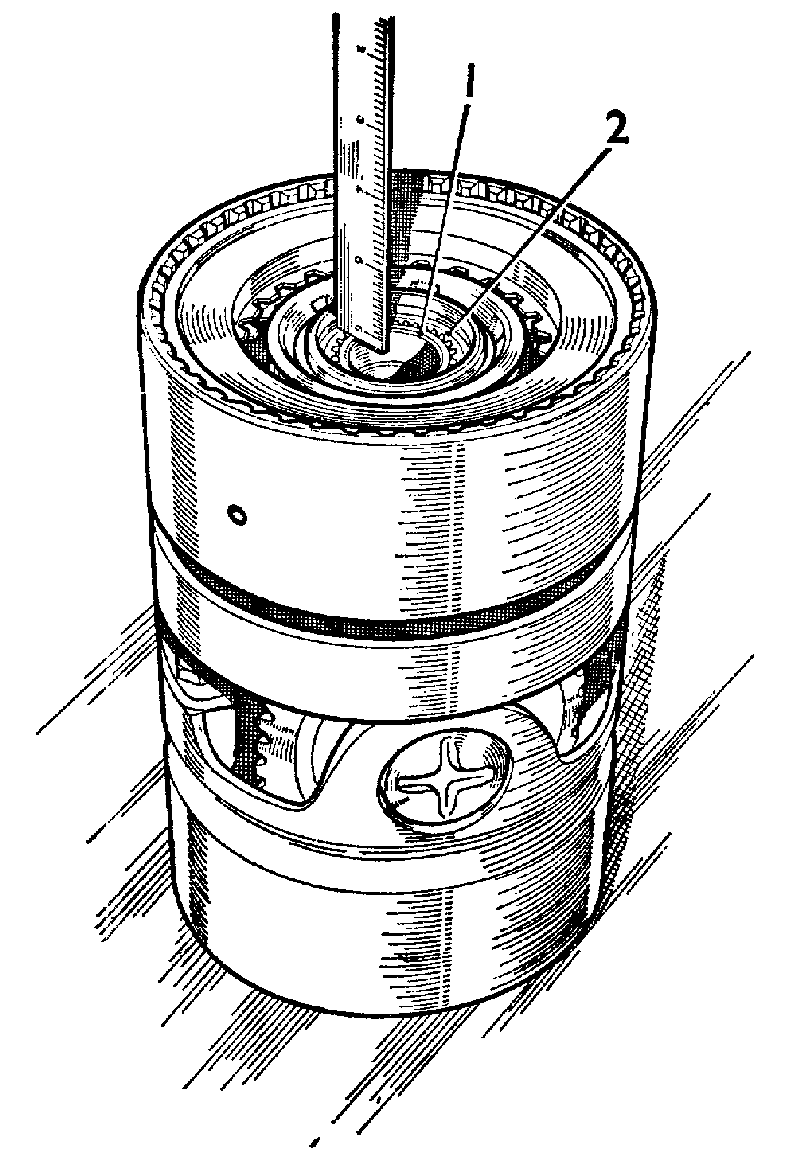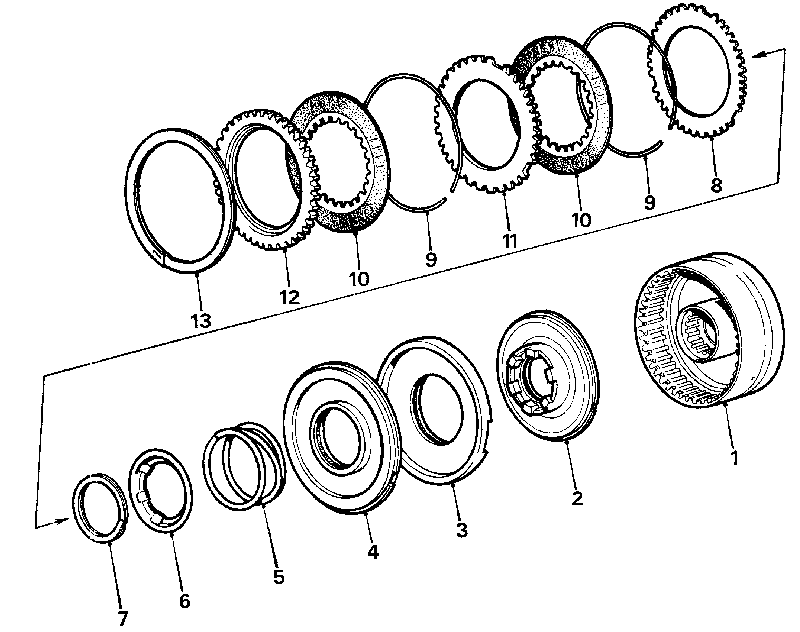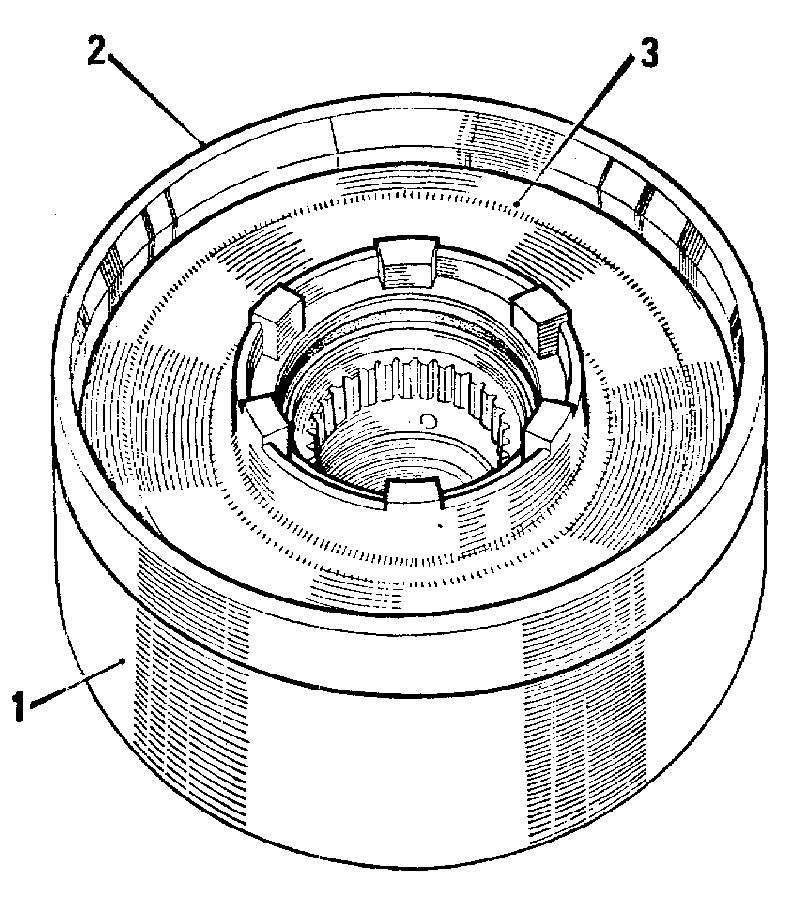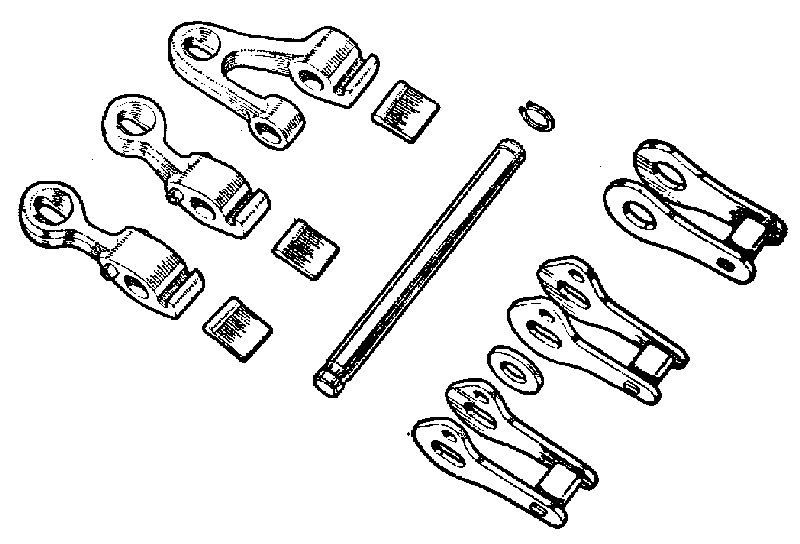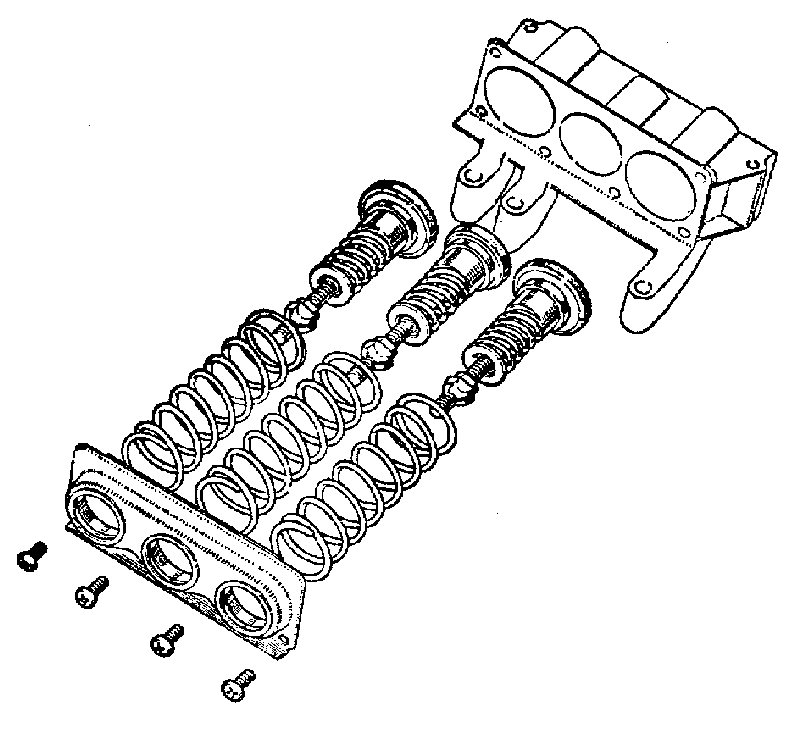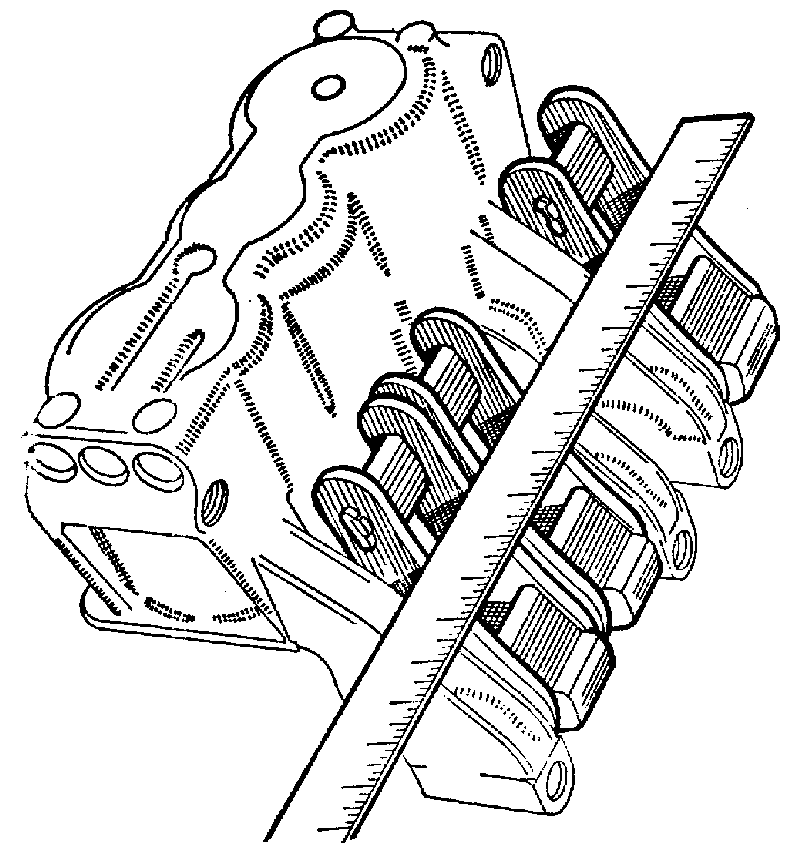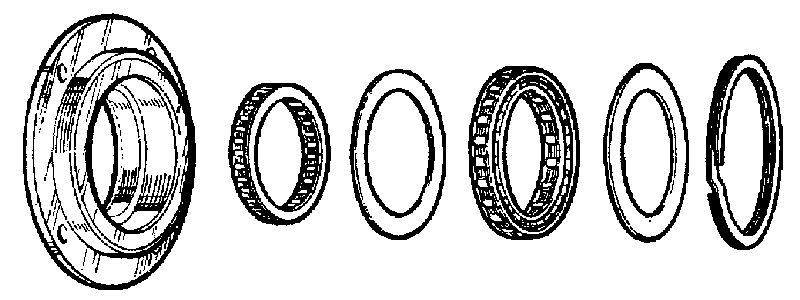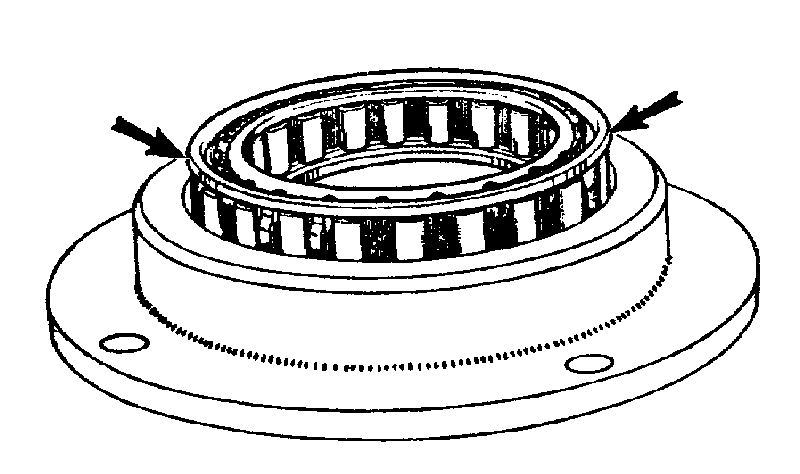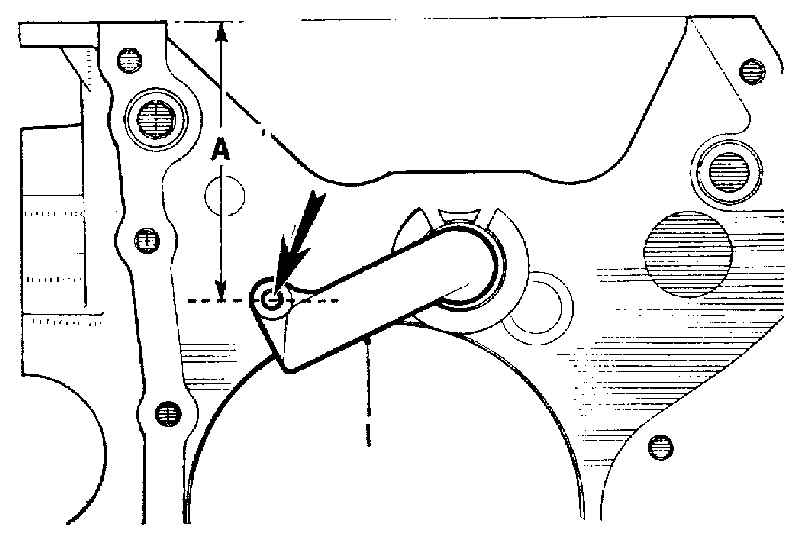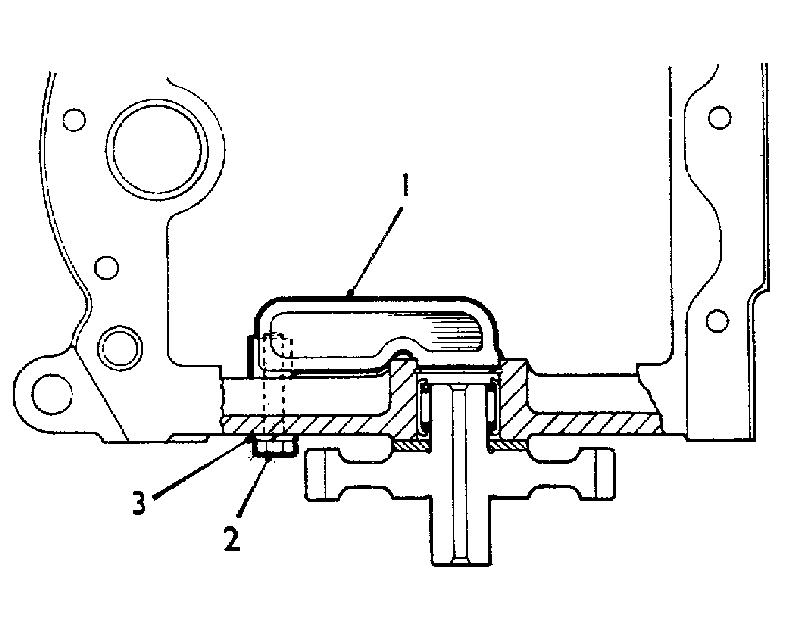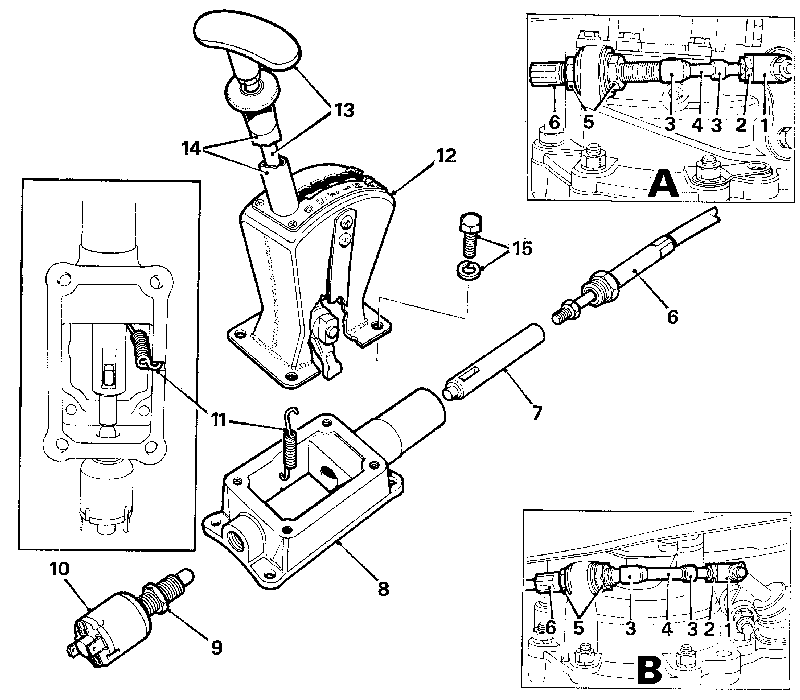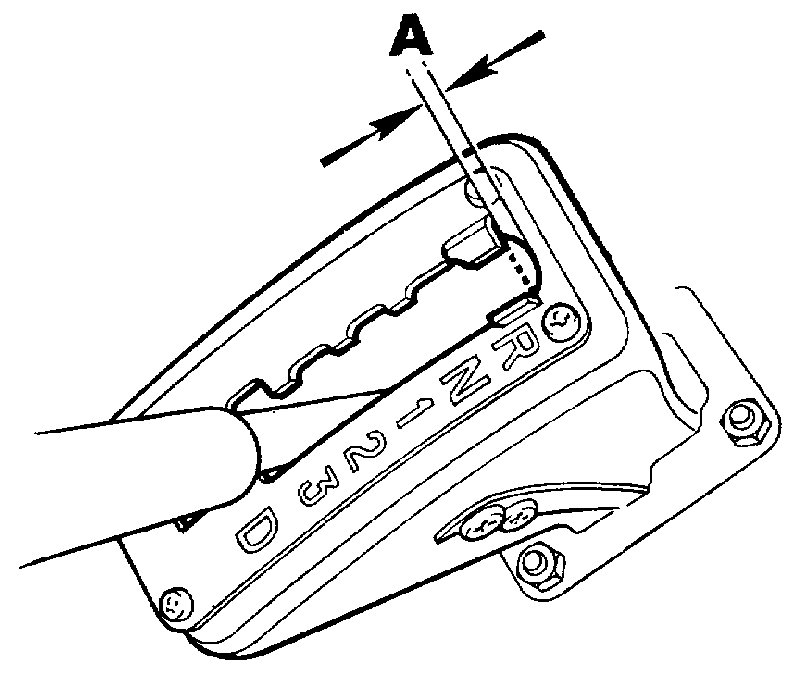| FAULTS | RECTIFICATION SEQUENCE |
| Torque converter | |
| Excessive creep or engine stalls when selecting gears | 2 |
| Poor acceleration and difficulty in starting from rest on hills | 5 |
| Severe overheating and reduced maximum speed in all gears | 6 |
| Rattle from converter on engagement of gears and frequency increasing with engine speed, particularly, when under load | 6 |
| Rattle or vibration from converter area in neutral and all gears | 11 |
| Rattle or buzz in 'N' up to approximately 1250 r.p.m. Noise disappears on engagement of any gear | 48, 49, 50 |
| Squeal from converter area in neutral and all gears | 12, 13 |
| Gear selection and change speeds | |
| Gear selections faulty | 3, 21 |
| Kick-down change speeds incorrect | 7, 2 |
| Change speeds incorrect on light throttle driving, possibly no drive in '1' or '4' of automatic 'D' range | 22, 23 |
| Erratic change speeds in automatic 'D' range | 24, 25 |
| 'Tie-up' in 4 automatic 'D' range and/or transmission slip in automatic 1 and 4 | 3, 22, 23, 4 |
| Clutch slip or 'flare up' on 3 to 4 change in automatic and manual ranges | 3, 22, 1, 4, 9, 28, 35, 36, 37, 42, 45 |
| Vehicle moves off in 4 when any of the forward gears are selected and 'ties up' in reverse | 41, 42 |
| No automatic gear changes, transmission slip in all forward gears | 43 |
| Transmission slip/loss of drive | |
| Complete loss of drive in all gear positions (transmission oil pressure normal), vehicle attempts to drive in 3 and 4 | 31, 32 |
| Transmission slip in all gear positions | 1, 4, 9, 27, 28, 29, 30 |
| Slip or no drive in reverse 'R' | 3, 1, 4, 9, 28, 8, 35, 36, 37 |
| Slip or no drive in all forward gears | 1, 4, 33, 34 |
| No drive in manual or automatic 1 | 38 |
| Drive in 1 but 'tie-up' in 2, 3 and 4 manual or automatic | 38 |
| Transmission slip in manual and automatic 2 or premature wear of second gear band | 3, 22, 28, 8, 39, 40 |
| Transmission slip in 3 | 3, 8, 28, 39, 40 |
| Slip or 'tie-up' on intermediate gear changes | 3, 4, 7, 23, 54 |
| Drag in 4 and 'R' reverse, other gears function normally | 42 |
| Pressures | |
| Excessive transmission pressures when starting from cold, with possible oil leakage from oil filter bowl seal | 28, 44 |
| Low engine oil pressure | 1, 4 |
| Noise | |
| Continual whine consistent with road speed but not in top gear | 51, 52 |
| Continual whine consistent with engine speed except when car is stationary | 53 |
| Noise or vibration with road speed in all gear positions | 26, 55 |
| Oil leaks | |
| Oil leaks fror converter area | 11, 14, 10, 15, 16, 17, 18, 19, 20 |
| Oil leak from filter bowl seal, see 'Pressures' | 44, 28 |
| SEQ. | RECTIFICATION | SECTION | SEQ. | RECTIFICATION | SECTION |
| 1 | Check oil level. | Aa. 1 | 32. | Check the bevel gear train planetary pinions. | Fa. 1 2 |
| 2. | Thoroughly check engine tune, idle and fast idle speeds, choke operation. also that the throttle opens fully. | Da.2 | 33. | Check fit of forward clutch feed pipe, the condition of all sealing rings (clutch feed) and ensure that correct cast iron sealing rings are fitted to forward clutch/auxiliary pump drive shaft. | Fa.6, Fa. 11 |
| 3. | Check selector lever cable and transverse rod adjustment. | Fa.2 | 34. | Check condition of clutch plates and piston in forward clutch. Check and rectify clutch plate end-float. | Fa. 11 |
| 4. | Carry out oil pressure check. | Fa.5 | 35. | Check feed pipes and sealing rings to top and reverse clutch and reverse band servo. | Fa.7 | |
| 5. | Carry out stall test. | Fa.5 | 36. | Remove the top/reverse clutch from the gear train and check that the bush in the reverse output shaft has not turned and shut off the oil feed to the top/reverse clutch. | Fa.12 |
| 6. | Carry out road test. | Fa. 1 | 37. | Check top and reverse clutch piston ring gaps and fit of rings in the piston grooves; check condition of clutch plates. | Fa. 13 |
| 7. | Check governor control rod (kick-down) adjustment. | Fa.4 | 38. | Check if free wheel support dowel bolt is loose or sheared; replace if necessary. | Fa.6 |
| 8. | Check band adjustment. | Fa.6 | 39. | Examine servo feed pipes, seals, and servo piston seal. | Fa. 11 |
| 9. | Check location of sealing rings and/or joint washer under oil filter head. | Aa.2 | 40. | Examine 2nd gear band and replace if excessively heat darkened or worn. Replace top/reverse clutch if damaged by worn band. | Fa.6, Fa. 13 |
| 10. | Check tightness of converter drain plugs. | Aa.3 | 41. | Replace forward clutch. | Fa. 11 |
| 11. | Check if converter retaining bolt or the six hub bolts are loose, | Aa.4 | 42. | Check that the gear train thrust washers are correctly positioned, and that the top/reverse clutch circlip is correctly located. | Fa.12, Fa. 13 |
| 12. | Check converter housing bush for seizure or if loose in housing. | Aa.4 | 43. | Check the forward clutch auxiliary pump drive shaft for breakage; also check pump gears, replace forward clutch and auxiliary pump housing assemblies, if damaged. | Fa.10, Fa.11 |
| 13. | Check converter does not foul converter housing, or housing loose and fouling converter. | Aa.4 | 44. | Check torque tightness of filter bowl retaining bolt. | 'General Data' |
| 14. | Check low pressure valve for flange distortion or core plug leakage. | Aa.4 | 45. | Incorrect re-assembly of gear train; check and replace any damaged clutch plates and refit gear train correctly. | Fa. 12 |
| 15. | Check converter housing oil seal for damage or incorrect location. | Aa.15 | 46. | Check that clutch plates are correctly engaged on hub. | Fa. 13 |
| 16. | Check for oil leakage from converter housing oil pump cover. | Aa.4 | 47. | Check condition of auxiliary pump gear thrust washer. | Fa.10 |
| 17. | Examine idler gear closed end bearing for leakage. | Aa.4 | 48. | Remove valve chest and check that correct regulator valve is fitted. | Fa.8 |
| 18. | Check for oil leakage from the converter hub bolt., (6). | Aa.4 | 49. | Check torque tightness of camshaft sprocket retaining nut. | 'General Data' |
| 19. | Check converter easing seam weld for oil leakage. | Aa.4 | 50. | Fit replacement oil pump assembly. | Aa. 8 |
| 20. | Check converter housing for porosity. | Aa.4 | 51. | Check the bevel input gear preload. | Aa. 3 |
| 21. | Check for correct assembly of the valve block, i.e. that the selector valve is engaged with the selector fork of the pipe chest. | Fa. 7 | 52. | Check the shim adjustment of the top/reverse clutch-assembly to gear train. | Fa.12 |
| 22. | Check setting and alignment of the valve block governor valve with the governor lever (on pipe chest). | Fa. 7 | 53. | Check the helical input and idler gear adjustment. | Aa. 3 |
| 23. | Check that correct governor/auxiliary pump assembly is fitted in relationship with valve block (two types of each unit (have been used). | Fa.7 | 54. | Check that the interconnecting feed pipe with the restricted bore is connected between the valve block and reverse serve. | Fa.7 |
| 24. | Check that the governor and governor valve operate freely; and for correct location of the valve block-governor link with the governor unit, | Fa.7 | 55. | Check condition of final drive gears and for correct pinion bearing preload. | Fa 16, Fa.6 |
| 25. | Check that the governor carrier shaft circlip is correctly positioned. | Fa.10 | |
| 26, | Check the auxiliary pump gears and the alignment of the pump housing with the end cover. | Fa.10 | |
| 27. | Remove front cover and check '0' rings on cover to valve block connection. | Fa.6 | |
| 28. | Remove and clean valve chest. | Fa.8 or 9 | |
| 29. | Check main oil pump; joint washer, retaining screws are tight, drive coupling, examine delivery pipe connections (pump to transmission case). | Aa.8, Aa.9 |
| 30. | Check oil pump pick-up pipe and oil strainer seals. | Aa.4 |
| 31. | Check converter feed pipe for blockage by blowing through with compressed air from the valve block end. | I Aa.4, Fa.7 |
